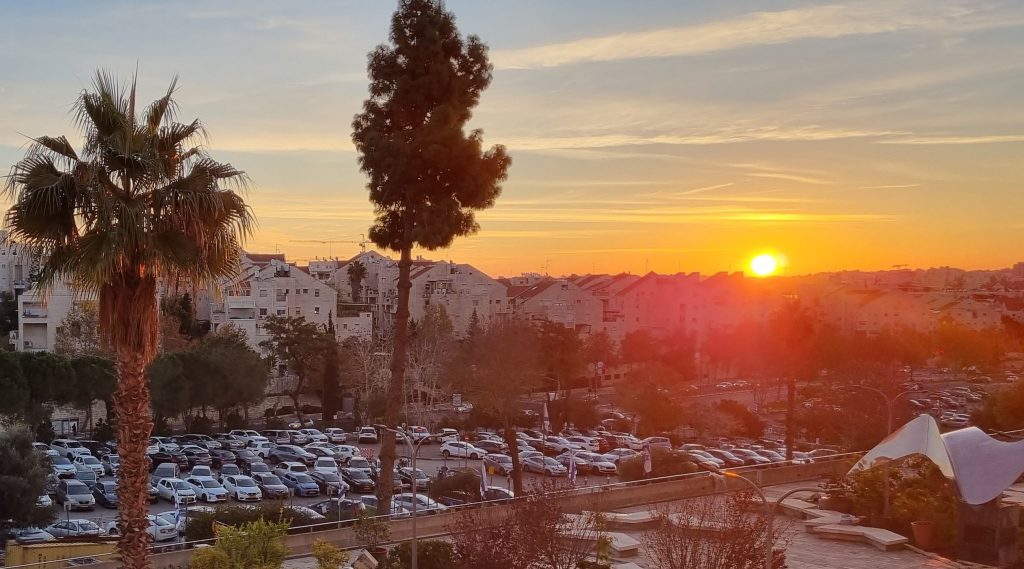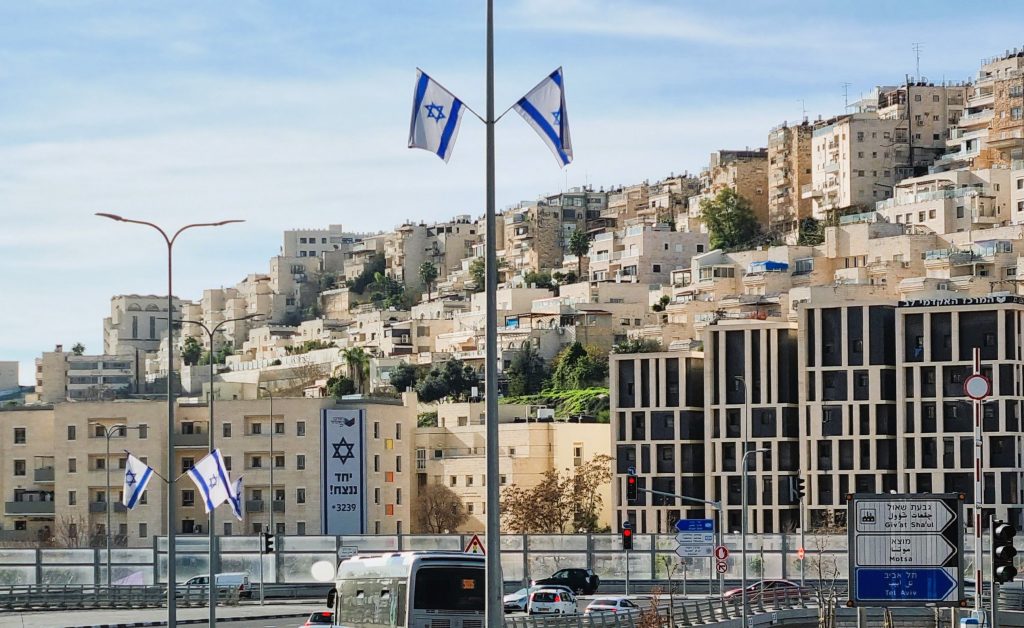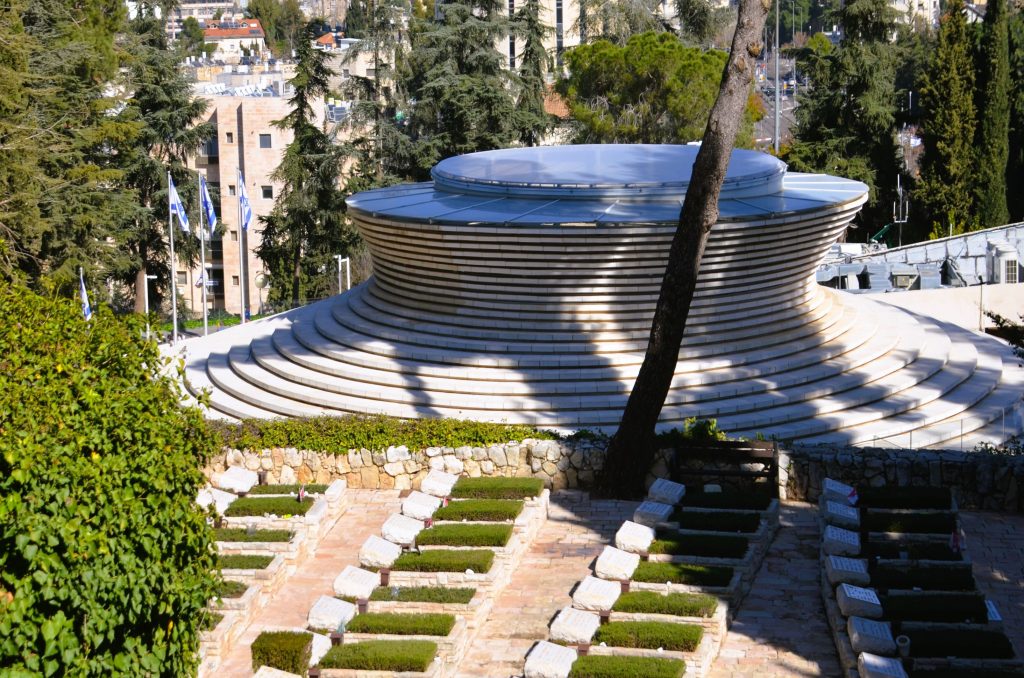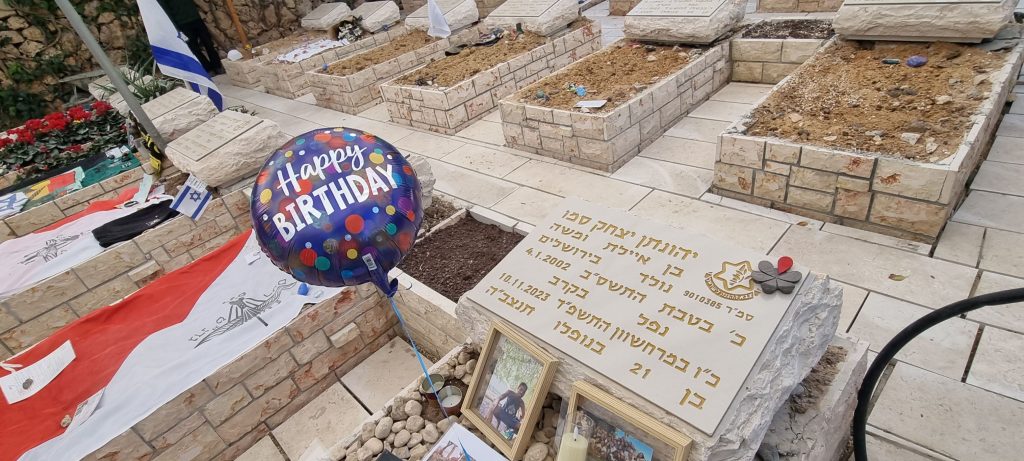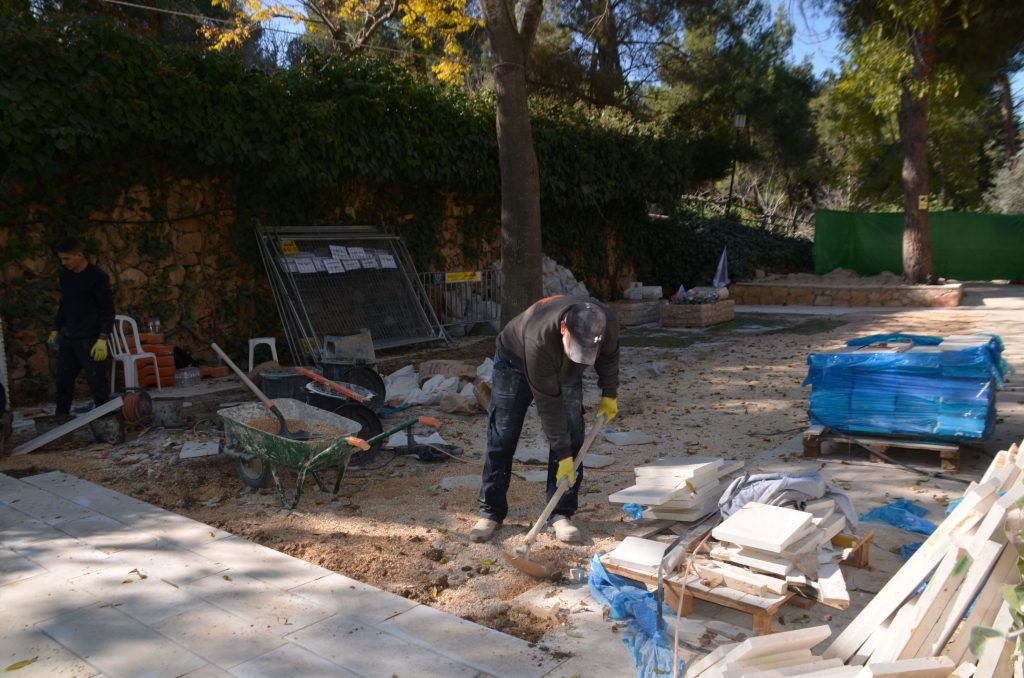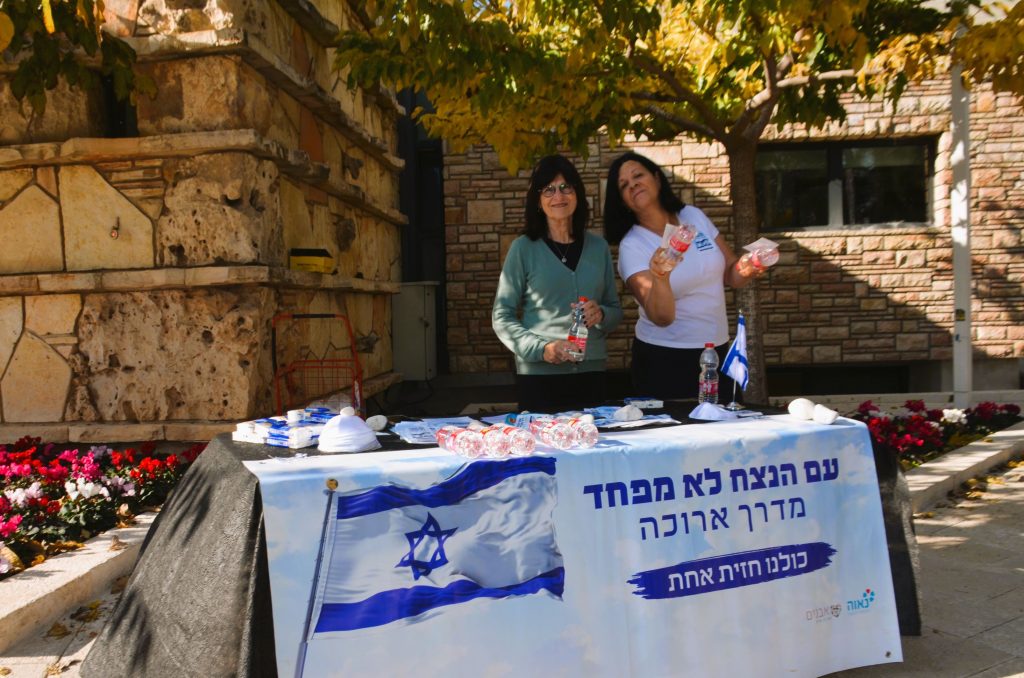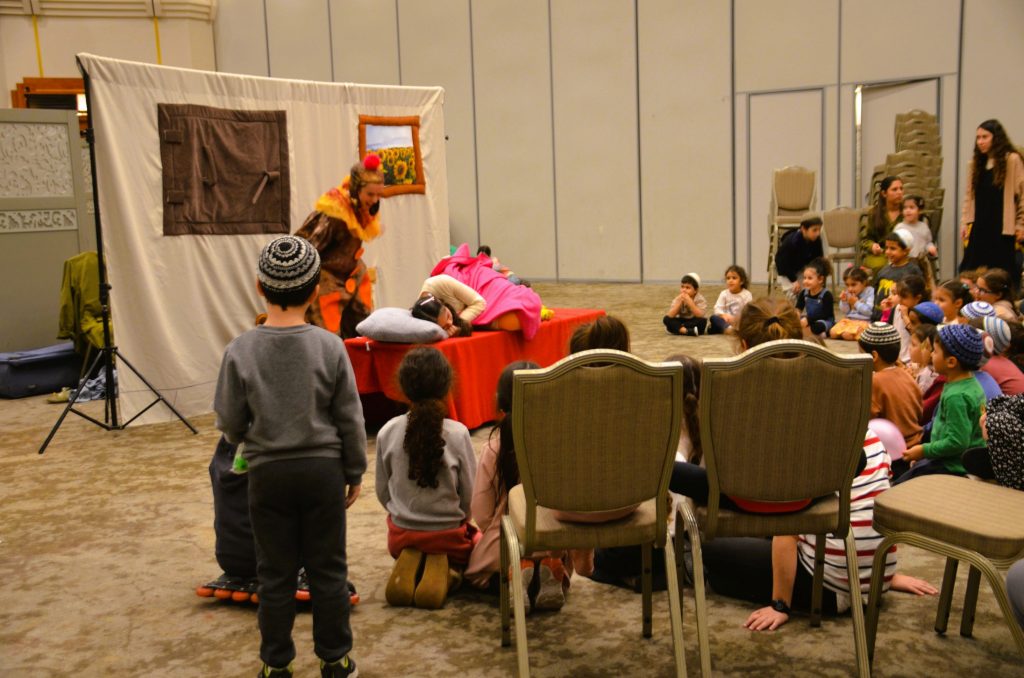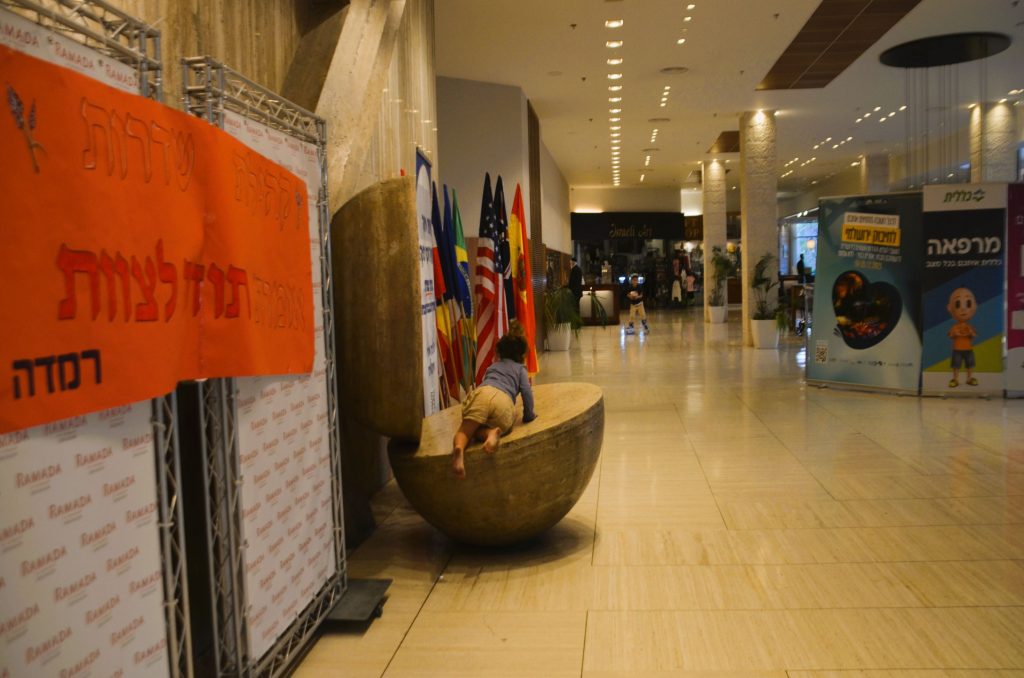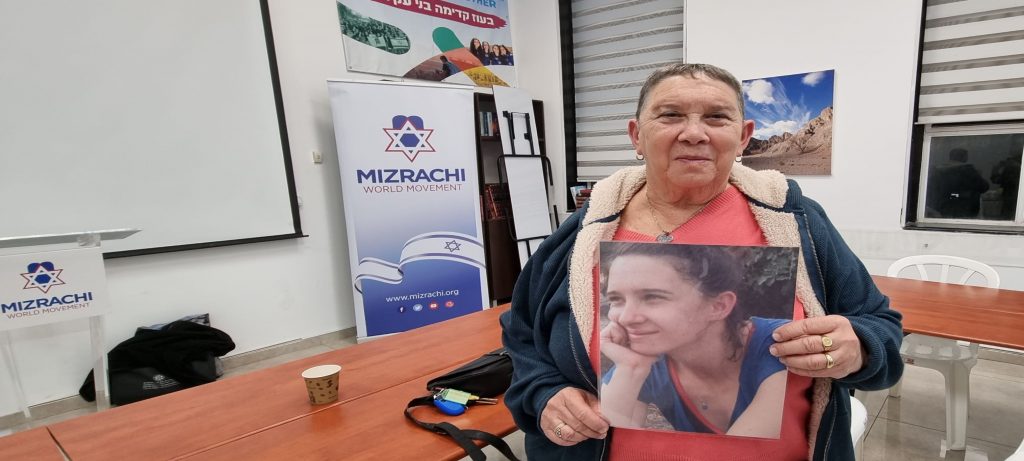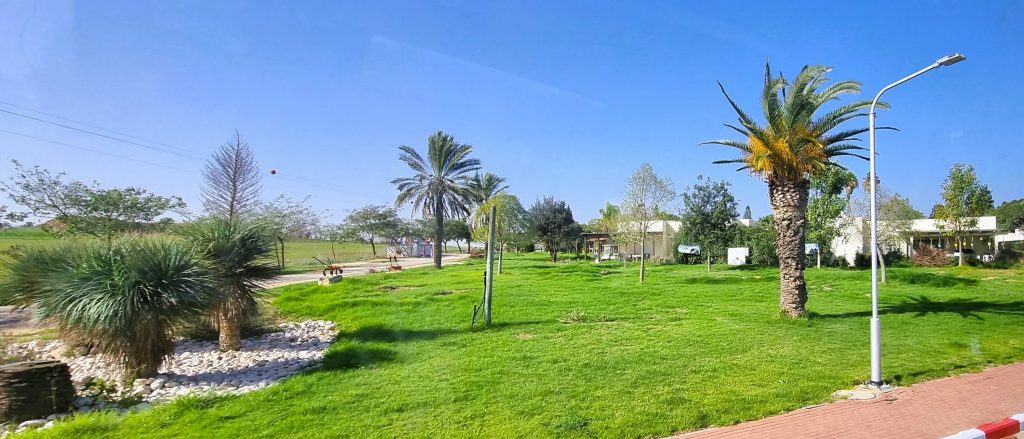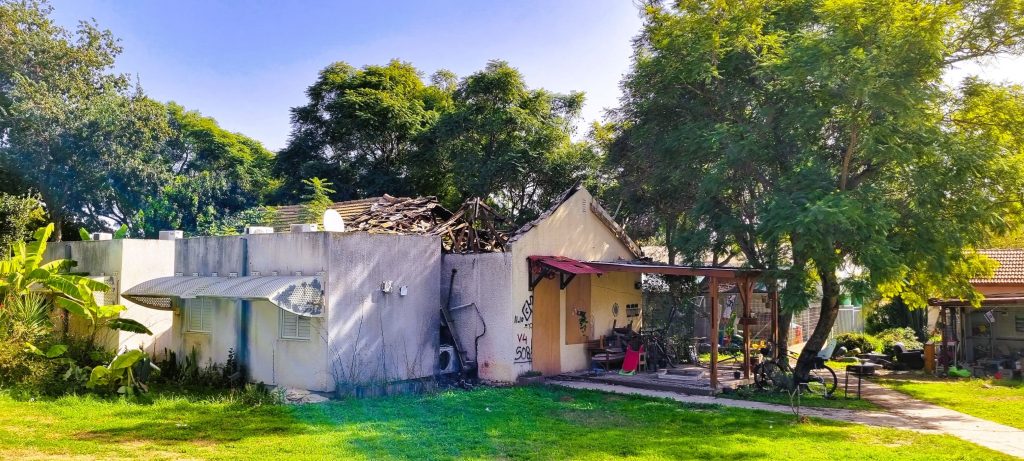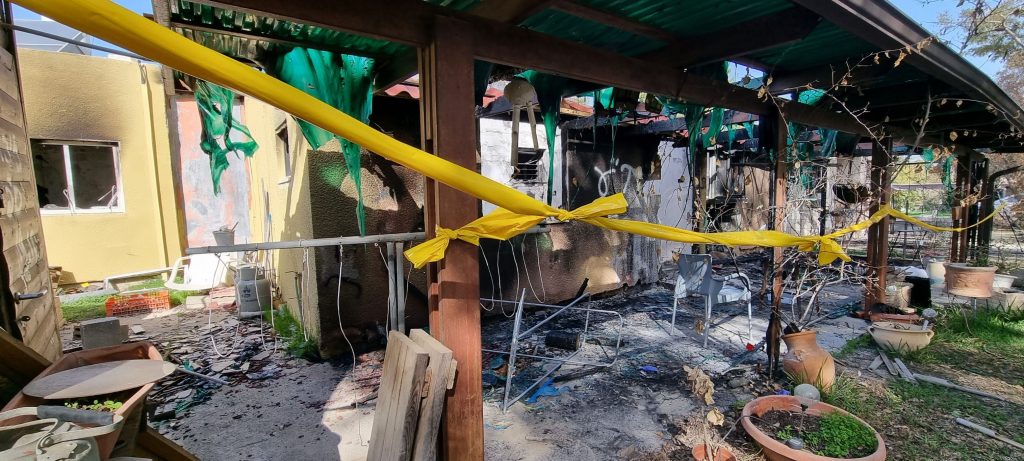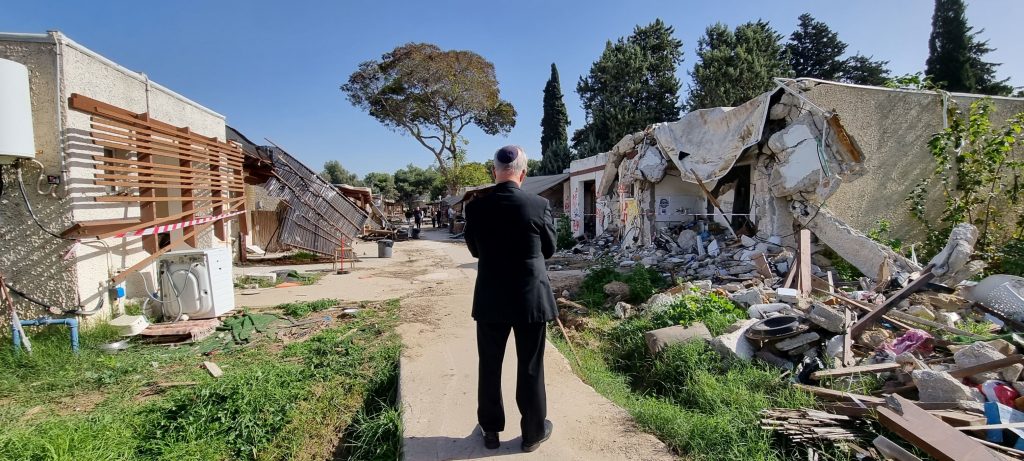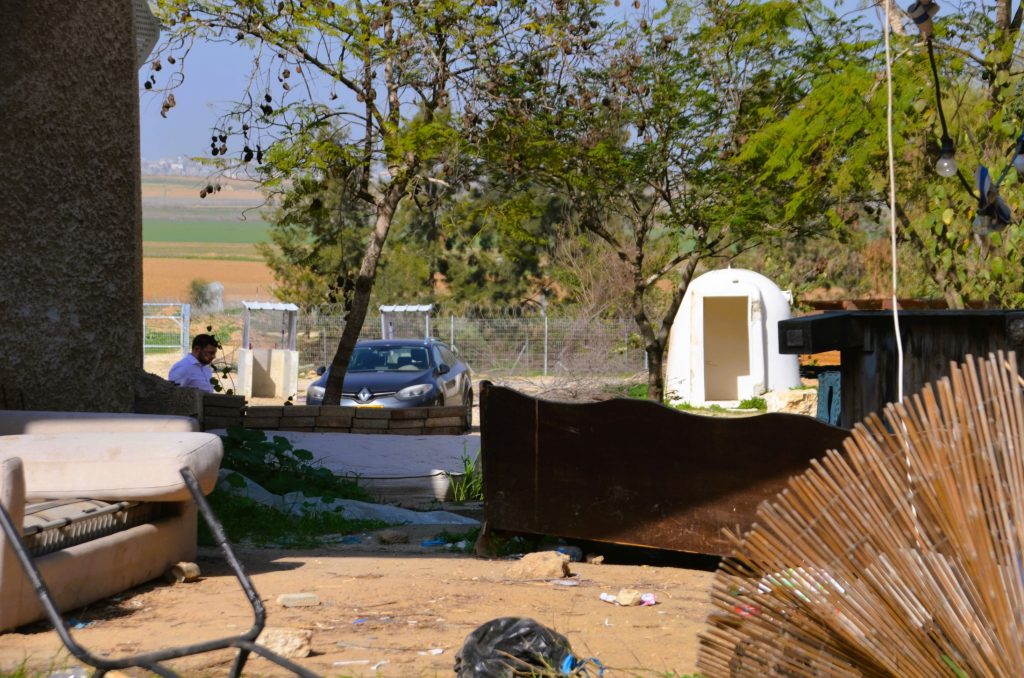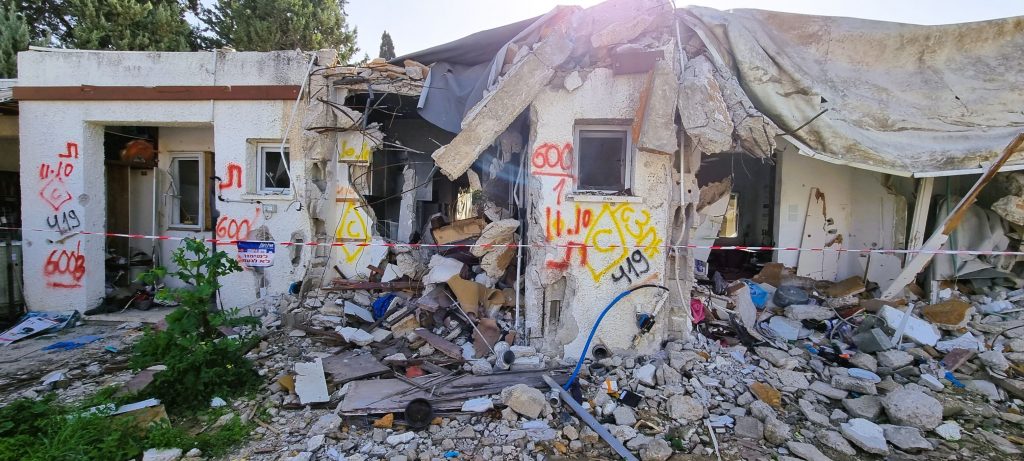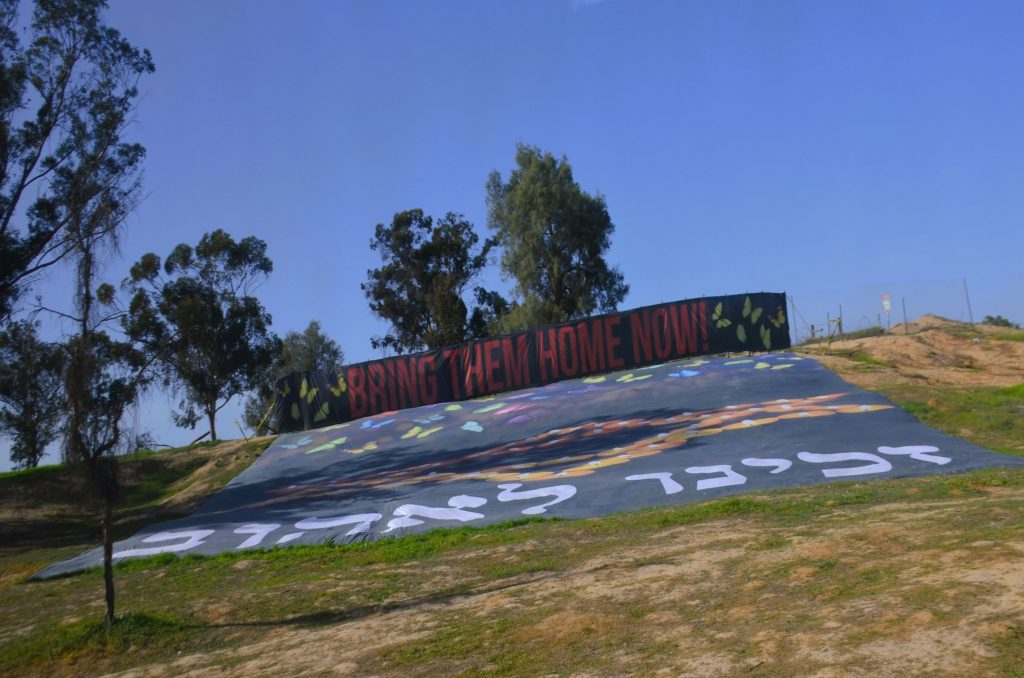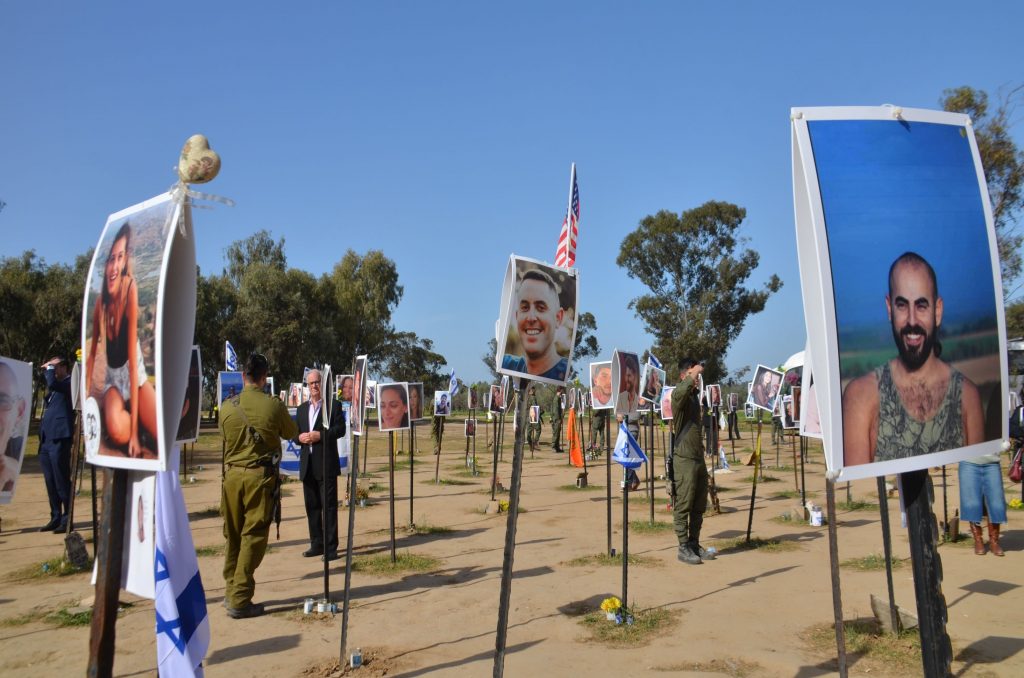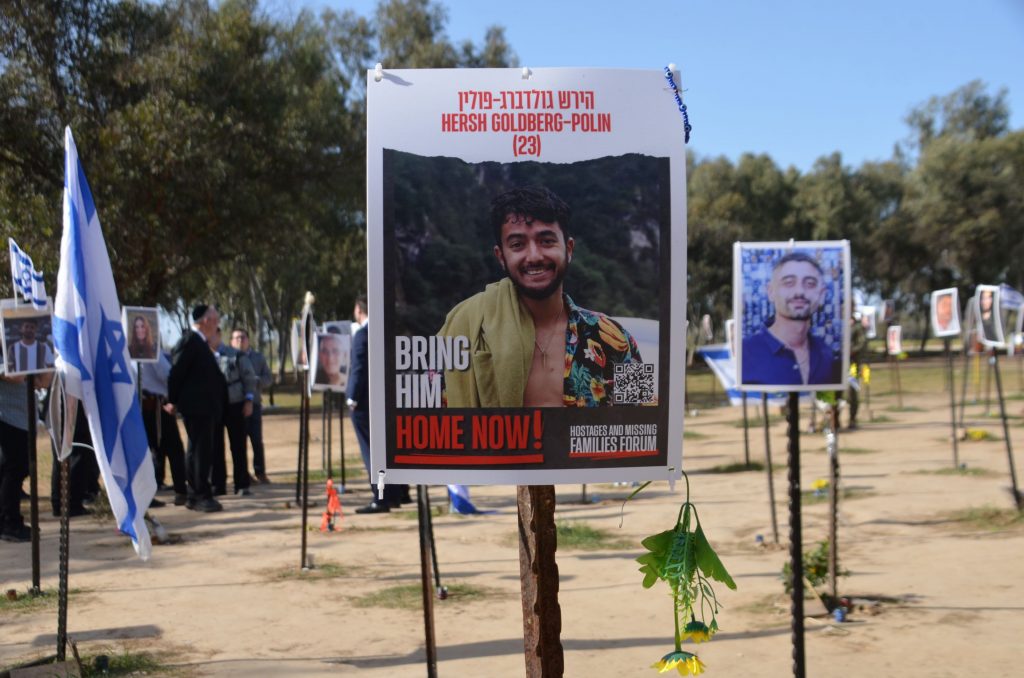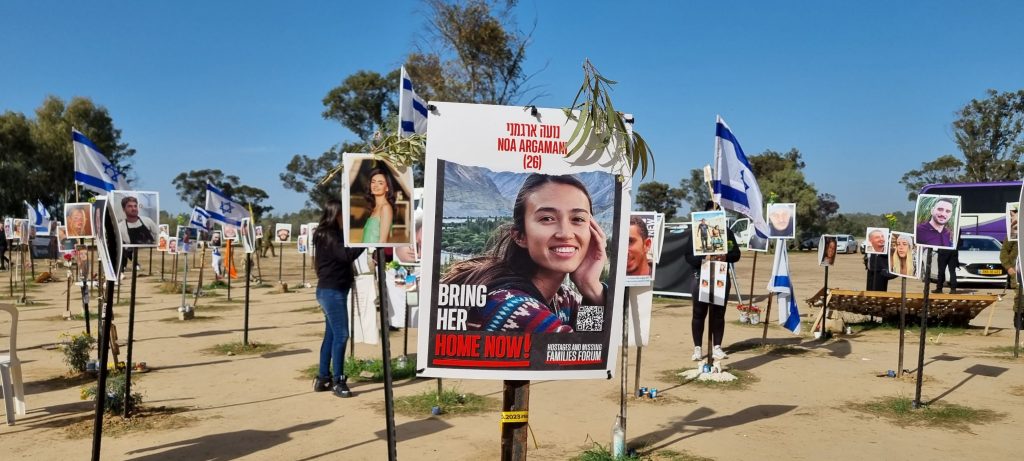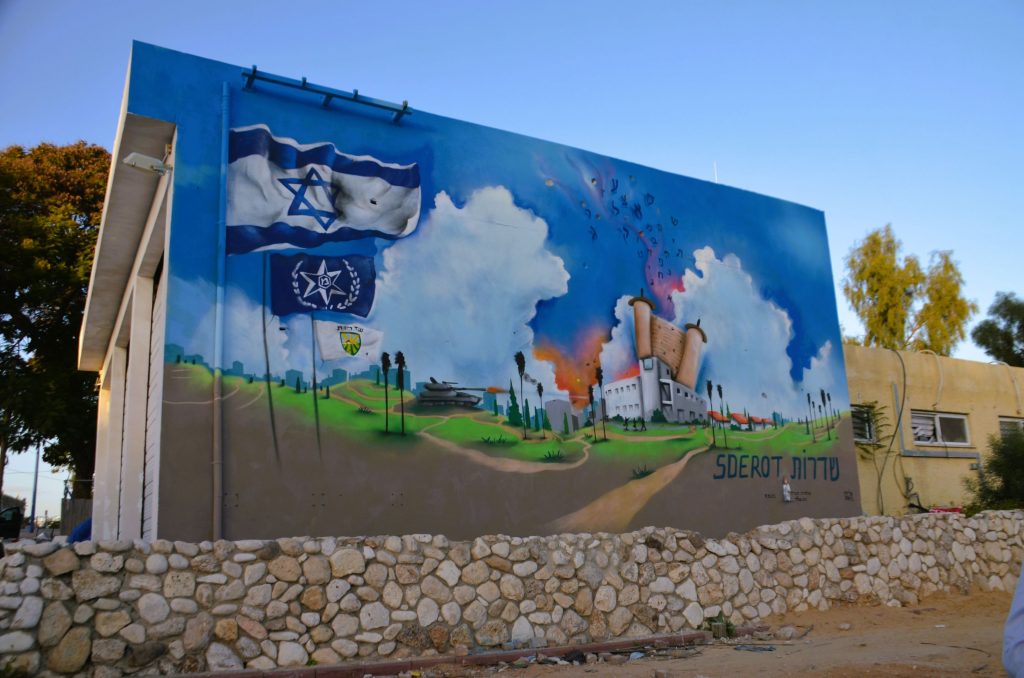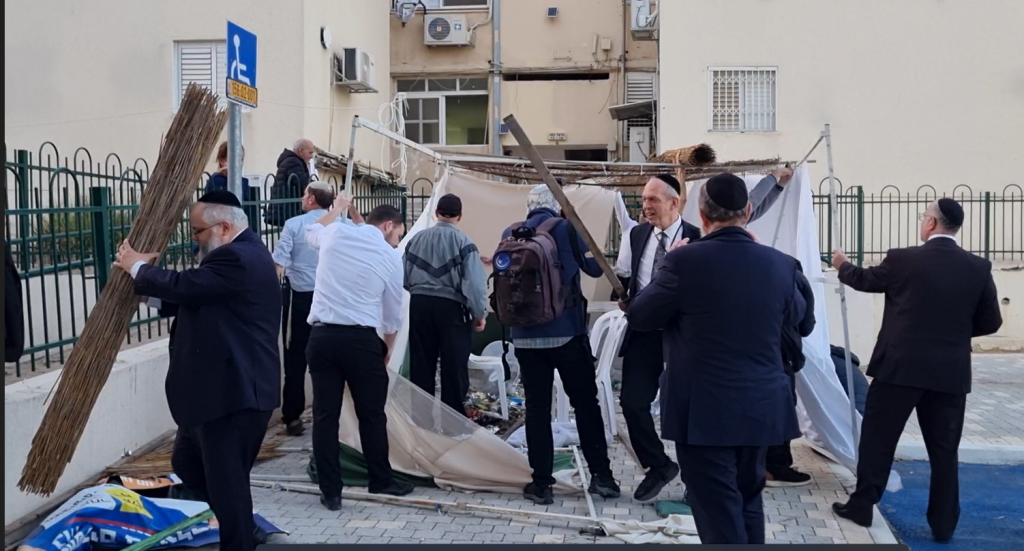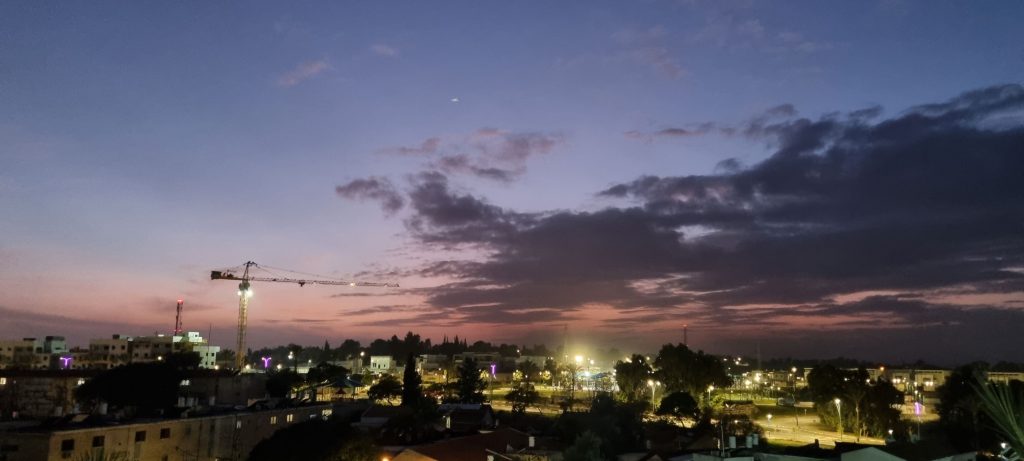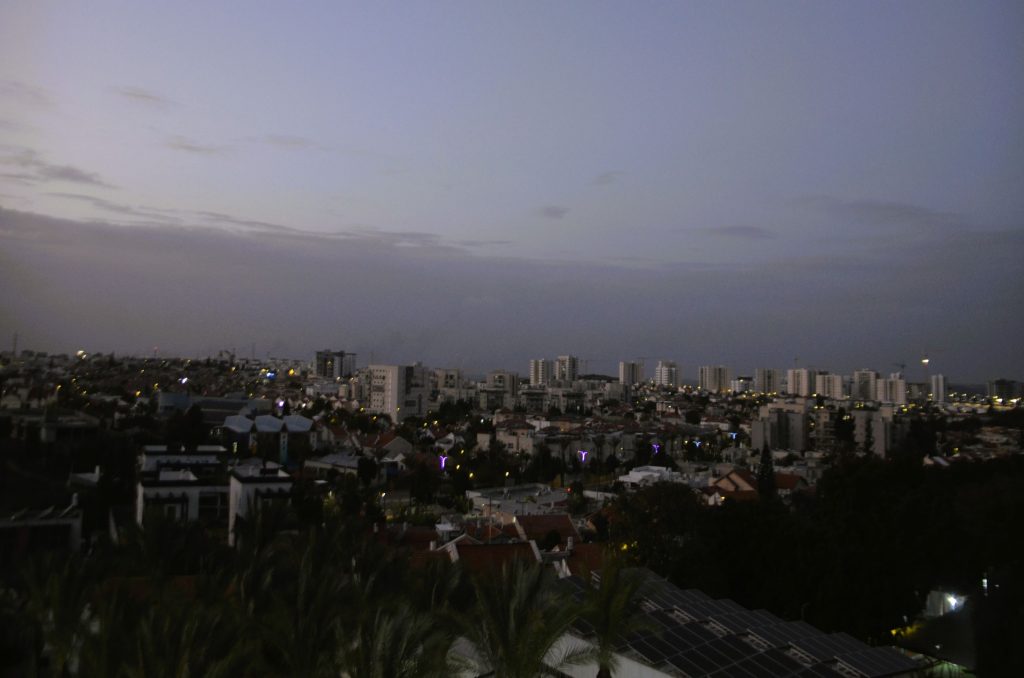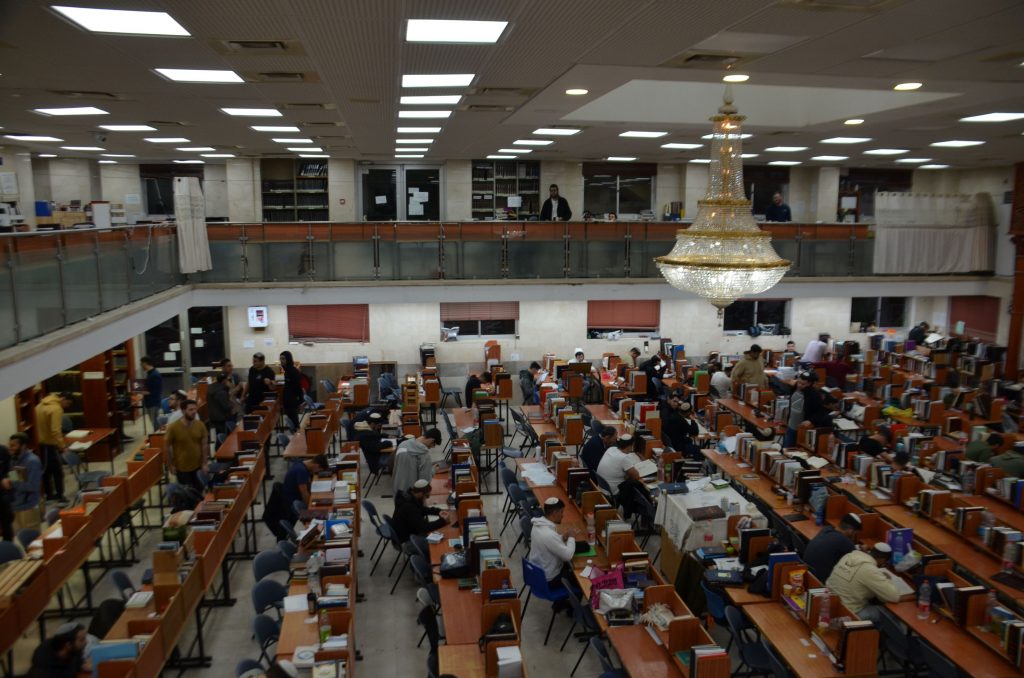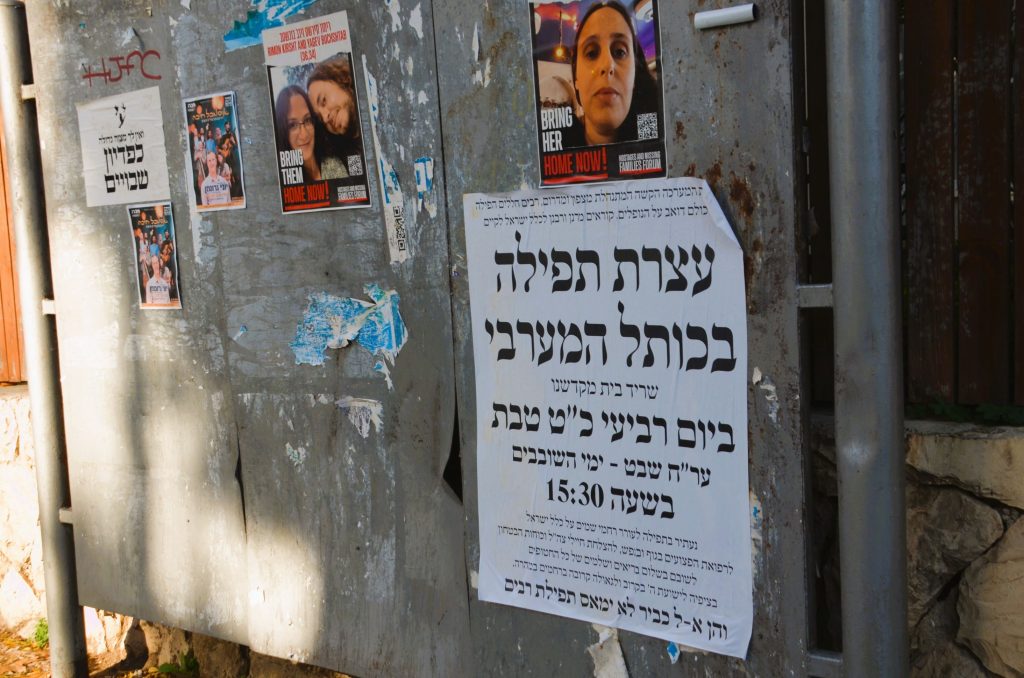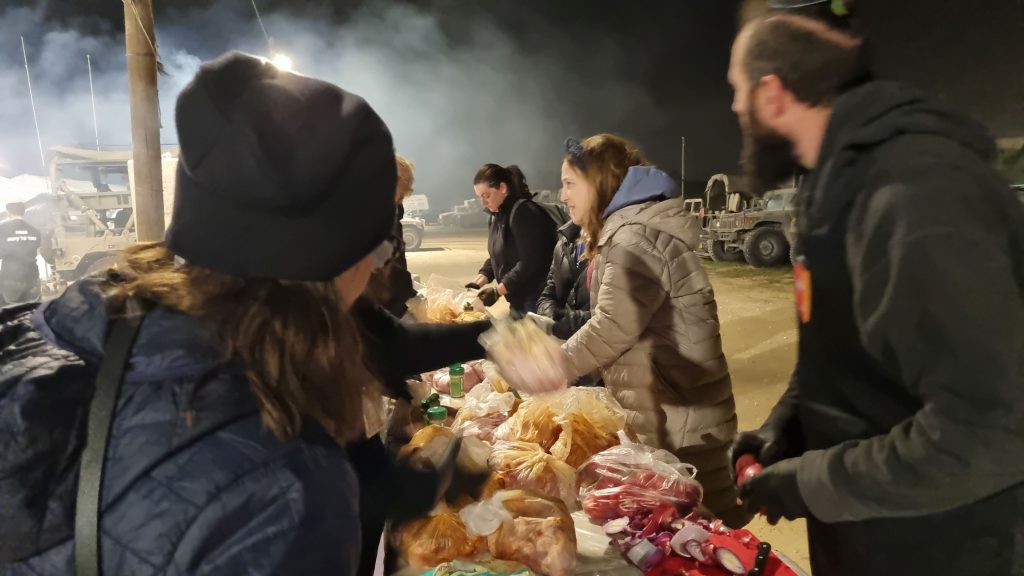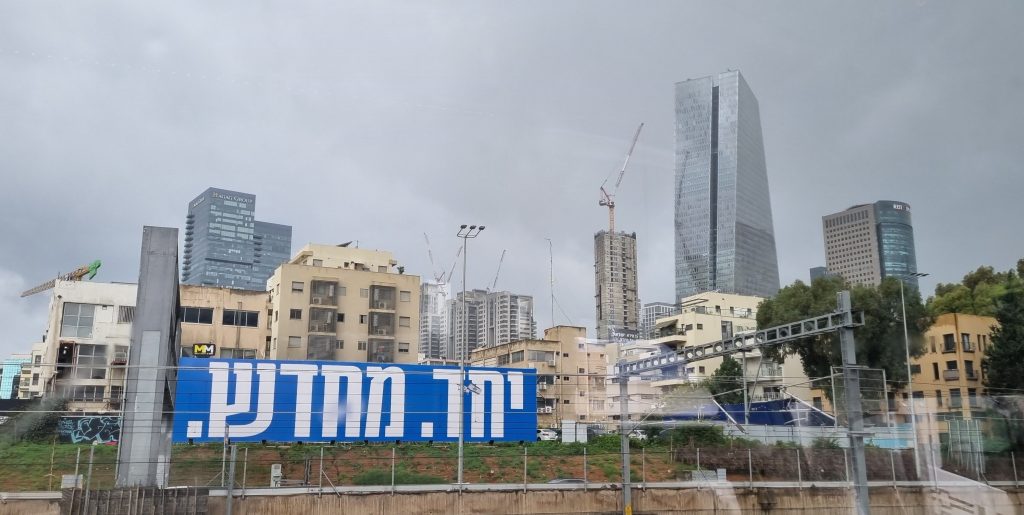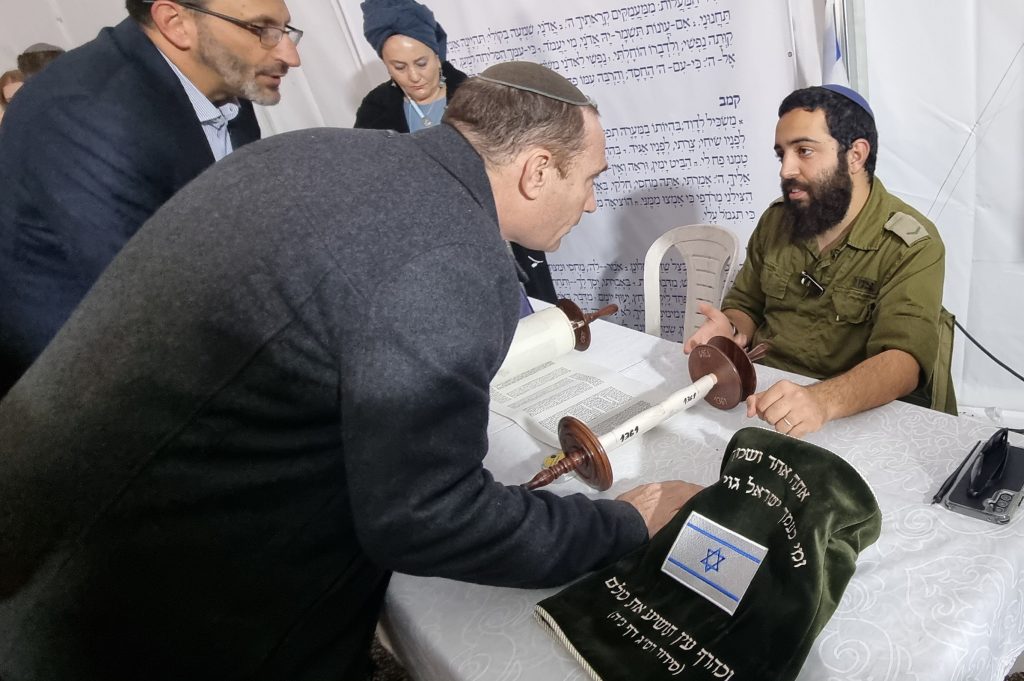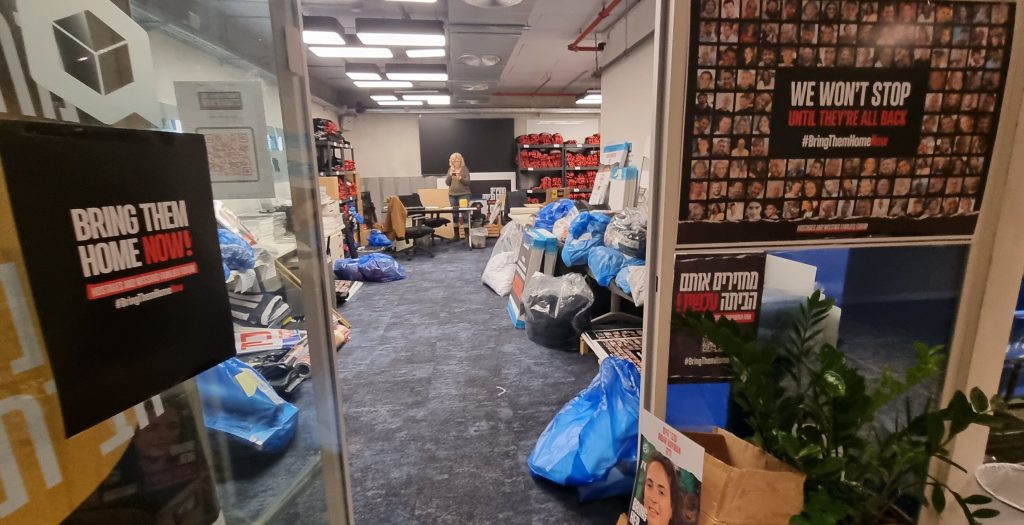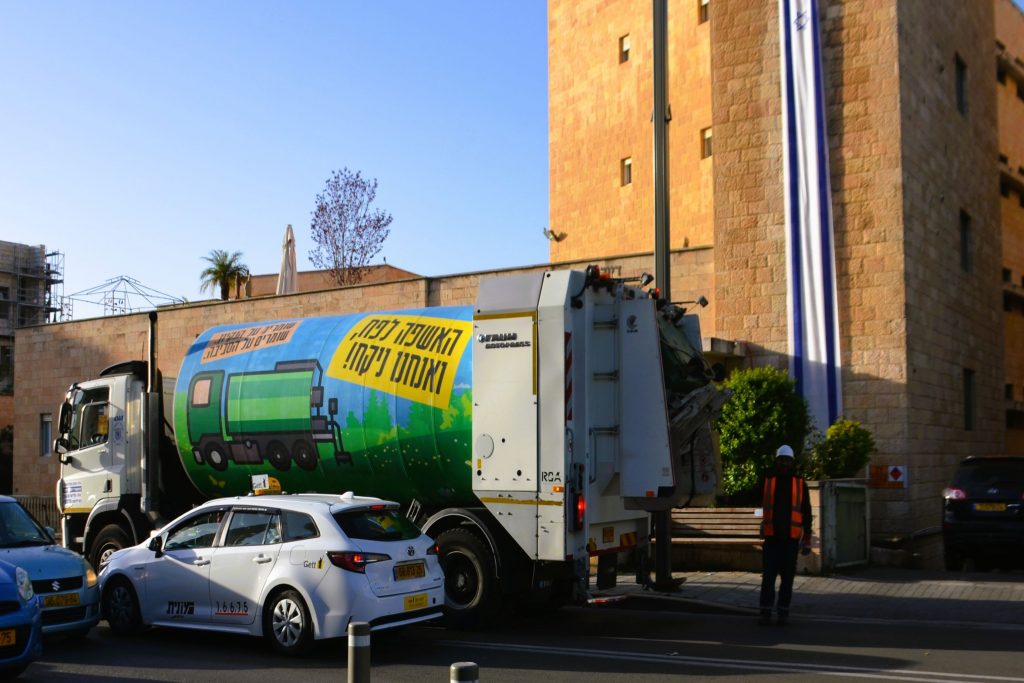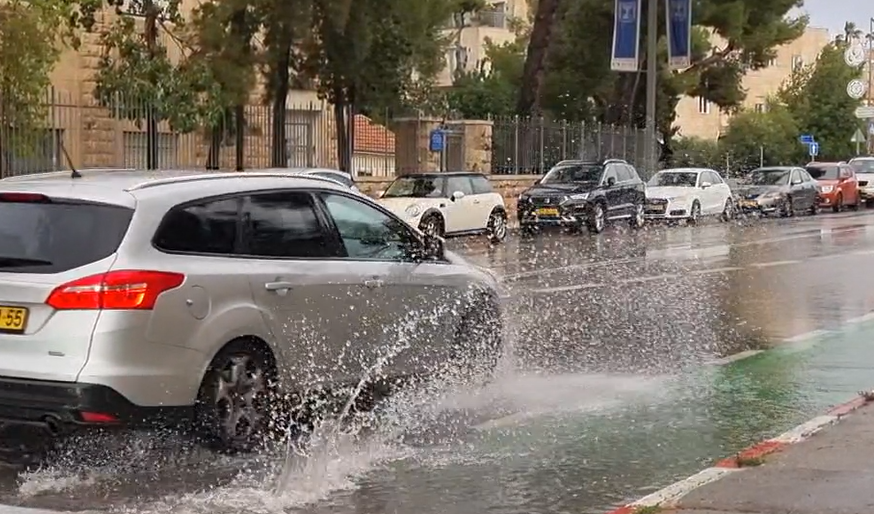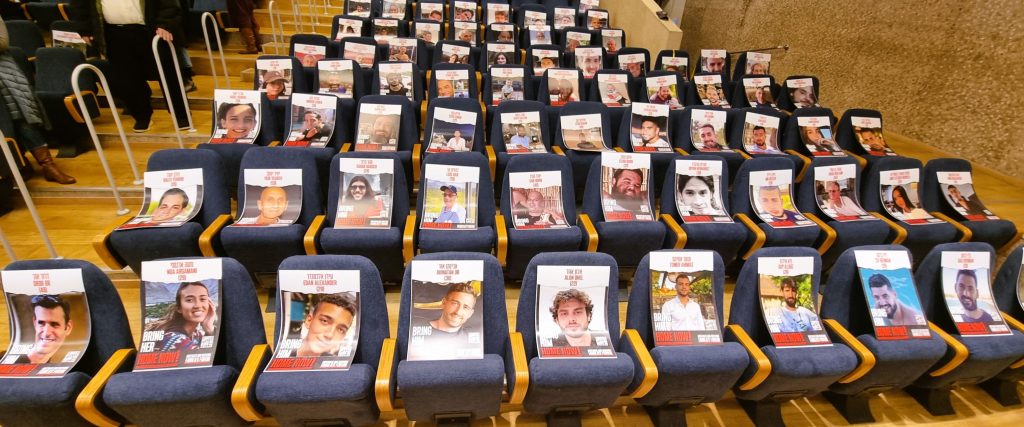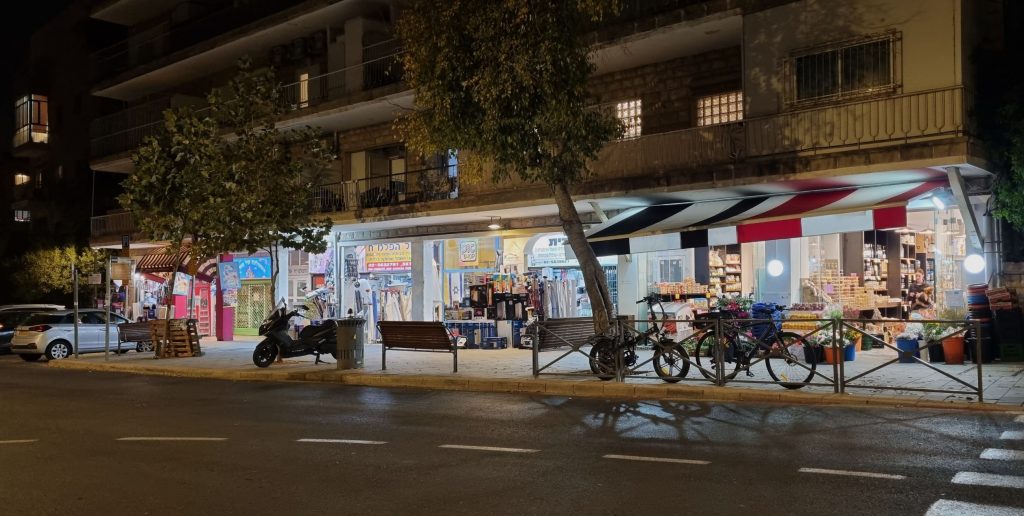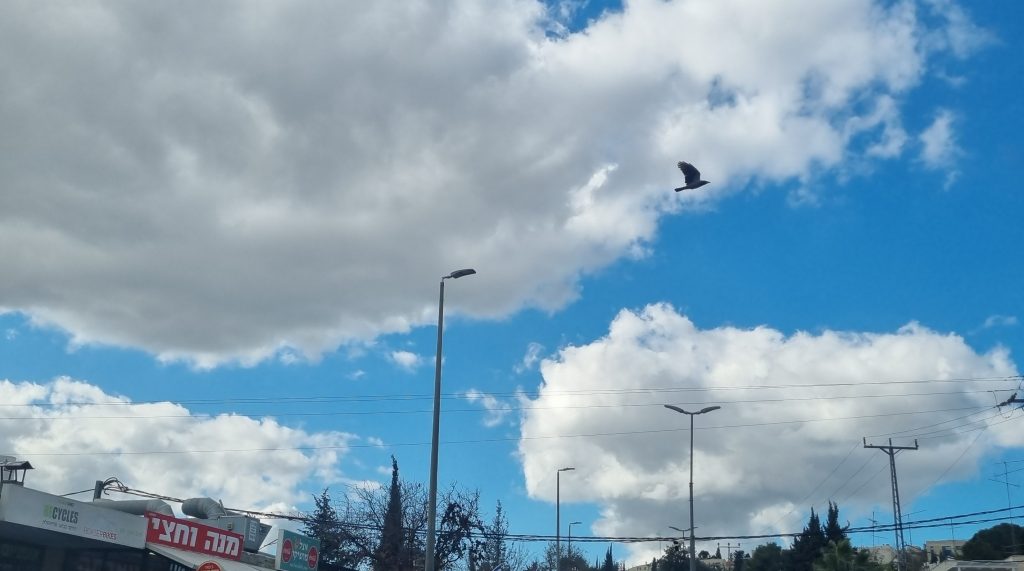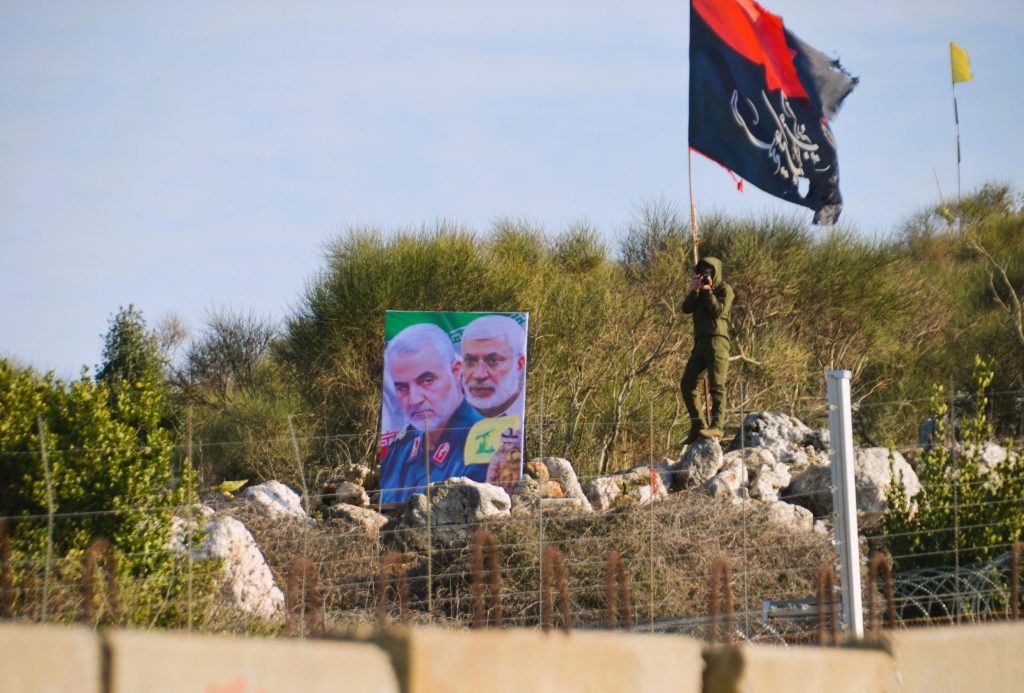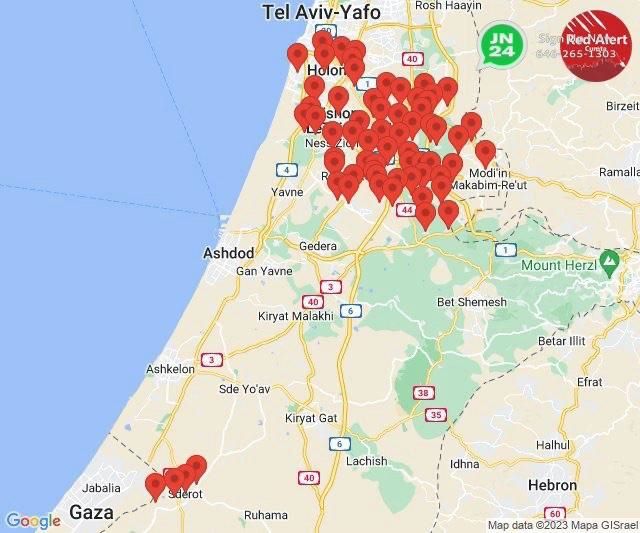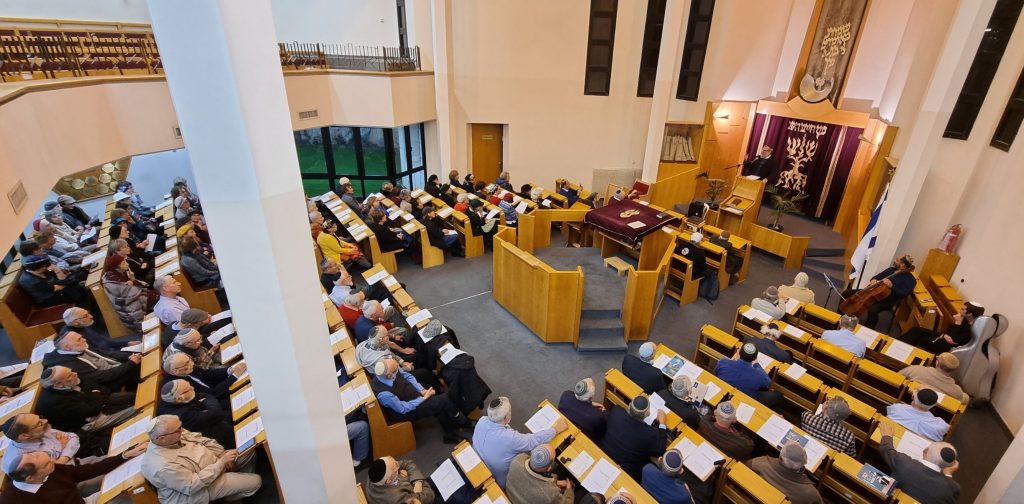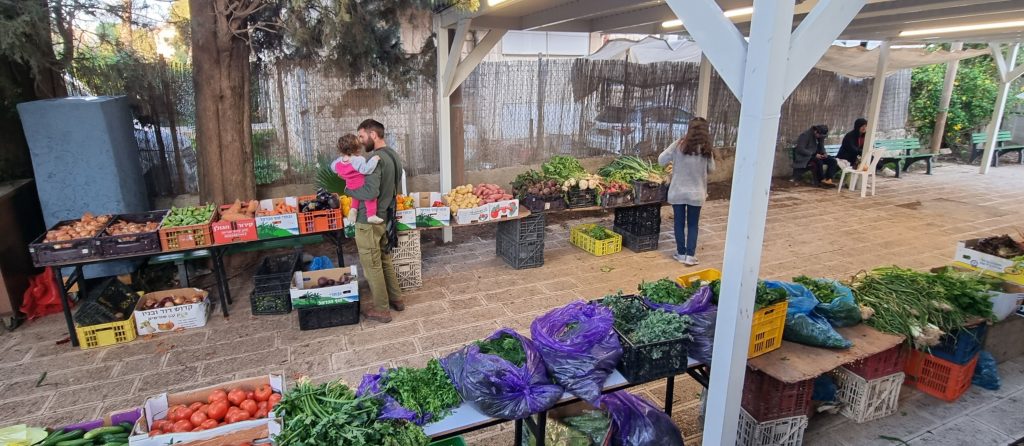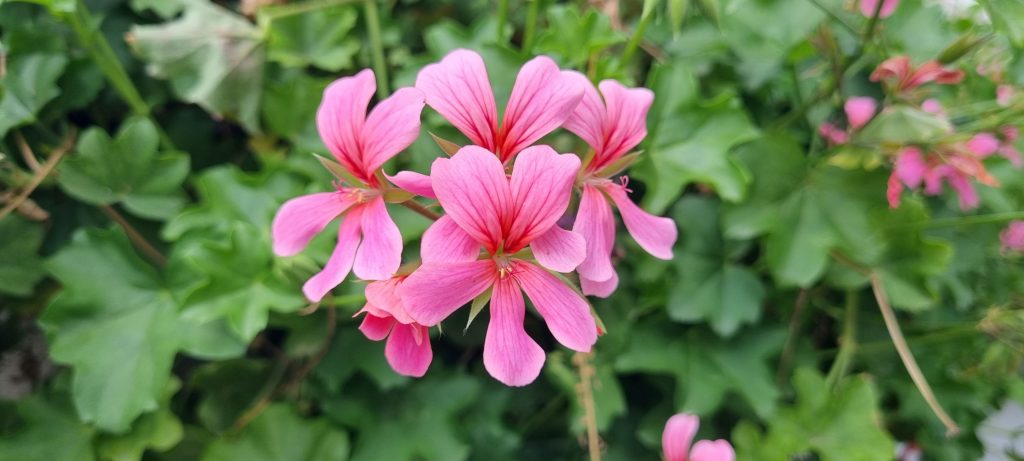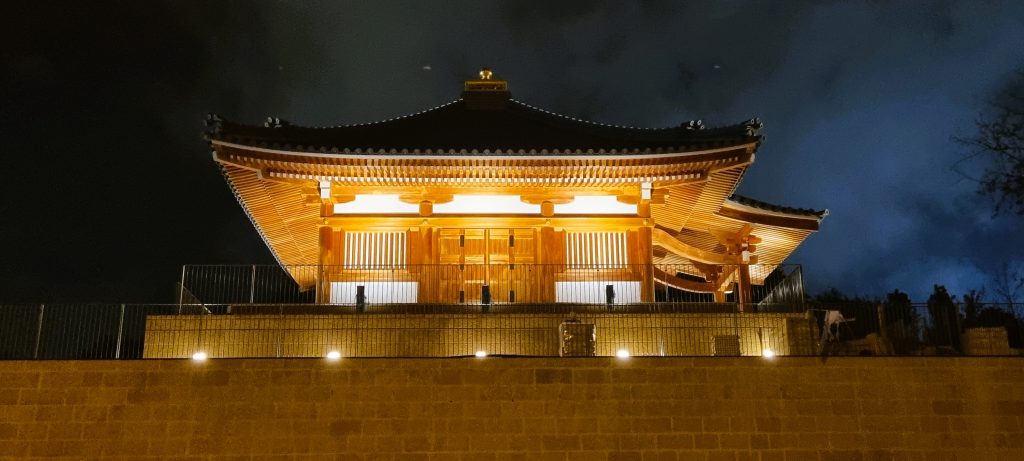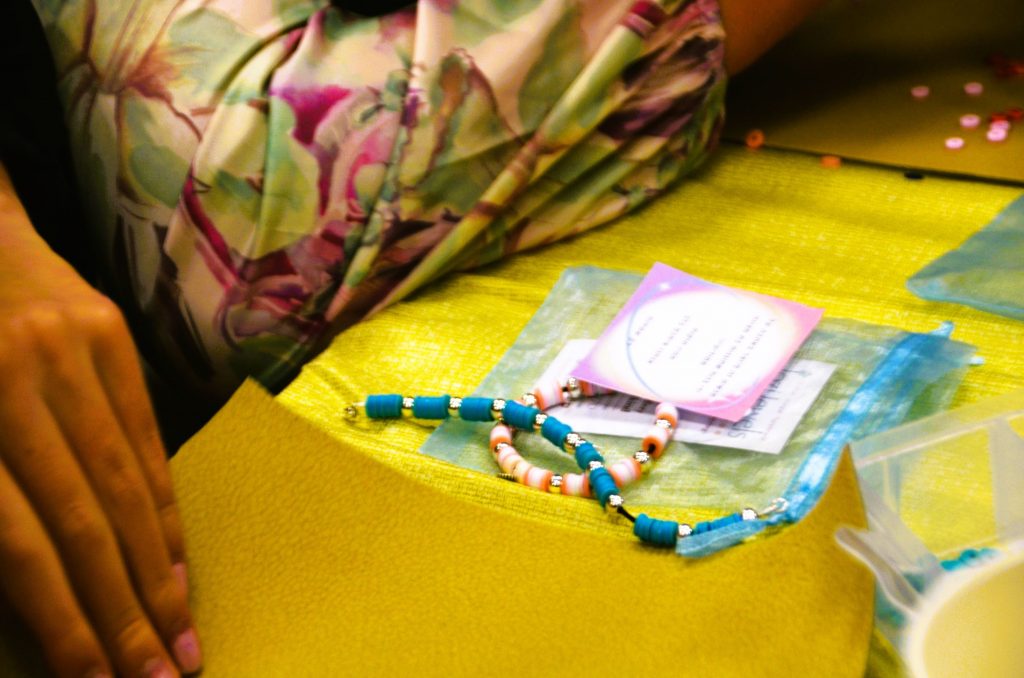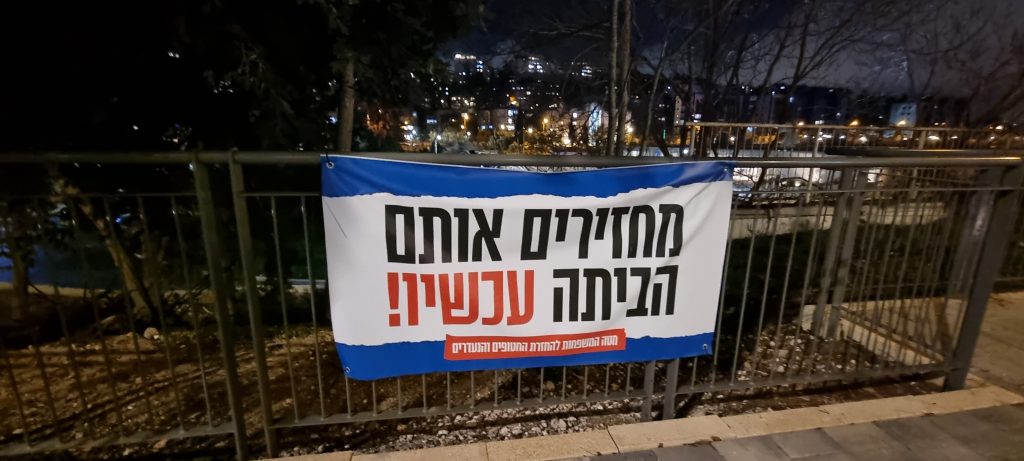What is changing faster?
The weather over the Jerusalem streets–or the mood of the people, trying to move forward after almost 4 months since Hamas atrocities started a war on October 7?
From the horrors on Simhat Torah, it is already time for Tu Bishvat, the holiday called the ‘New Year of Trees’.
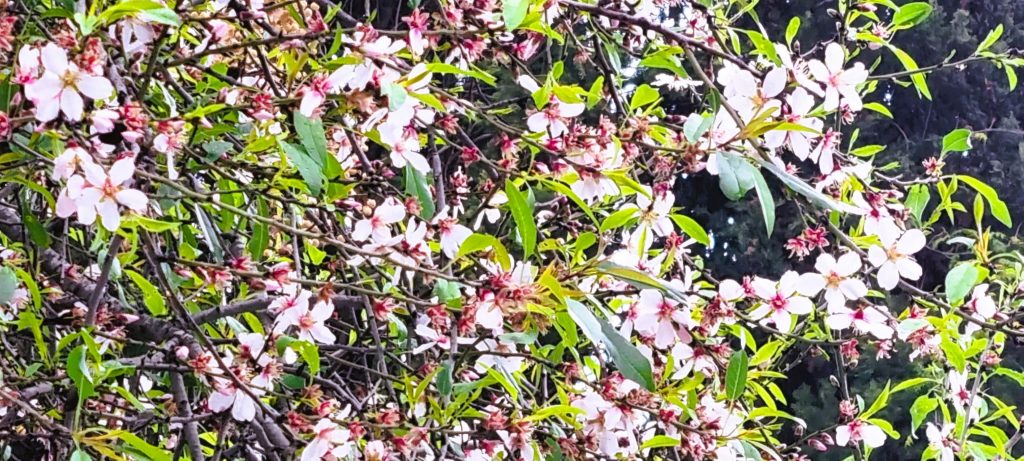
The almond trees were indeed bursting with flowers this week.
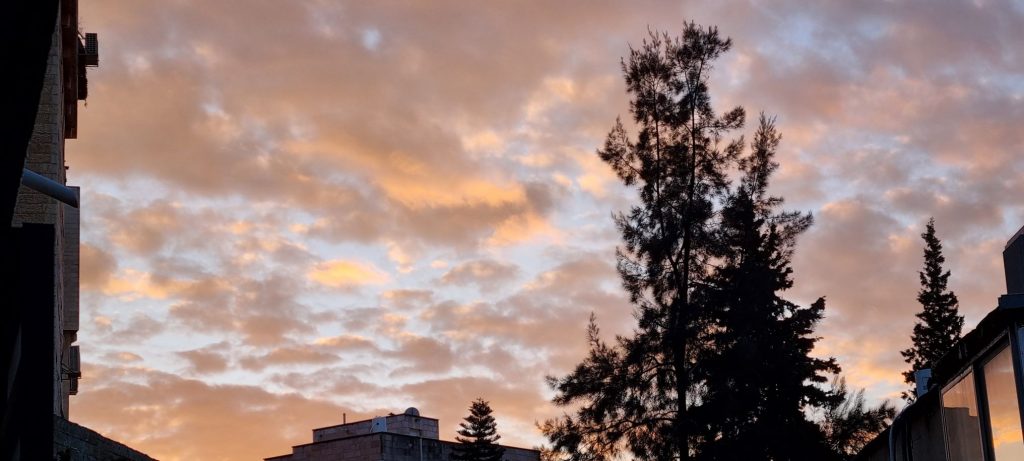
The sky at sunset was often filled with pink clouds.
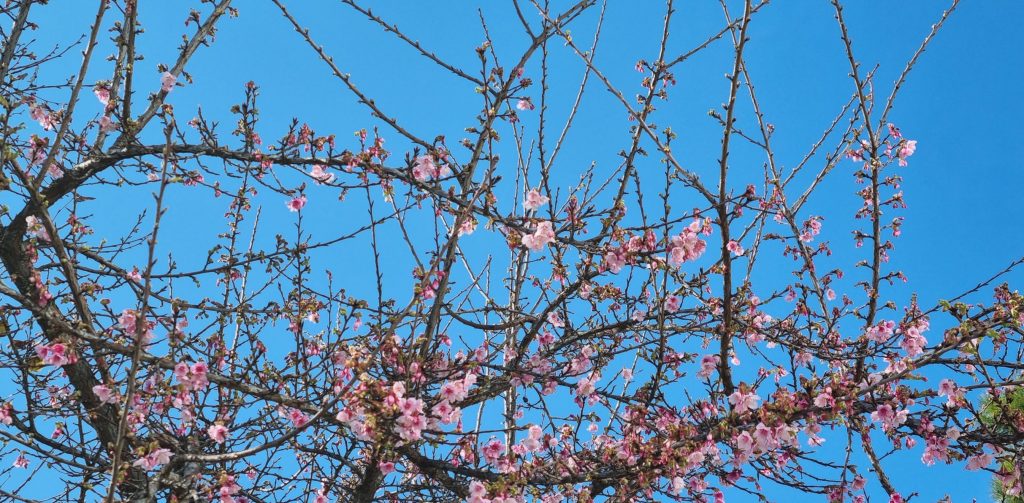
Even the pink blossoms of the cherry trees in the Jerusalem Botanical Gardens were ready for the holiday.

A sign on the way to the gardens was for ‘raising a glass’ to celebrate Rosh Hashana before an election which was to be held at the end of October and is still on hold until the end of February.
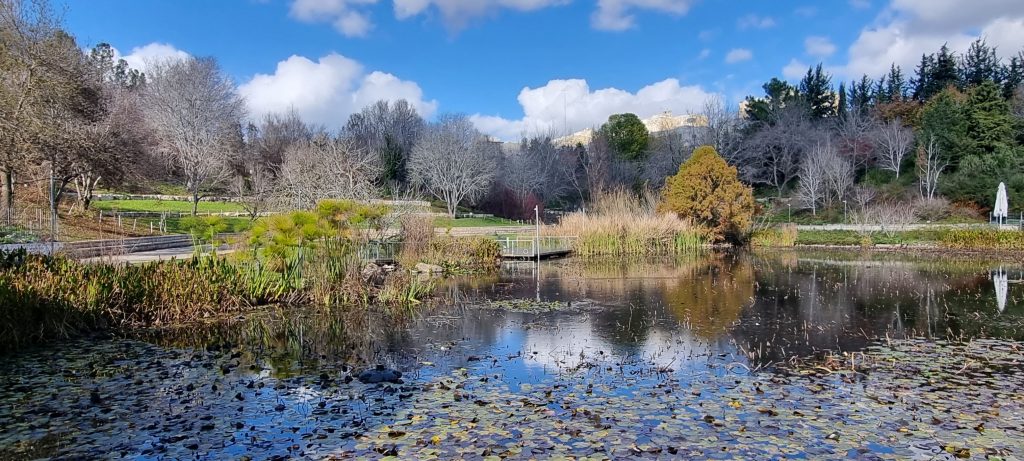
Inside the gardens, the pond is ready for the spring and summer ahead.
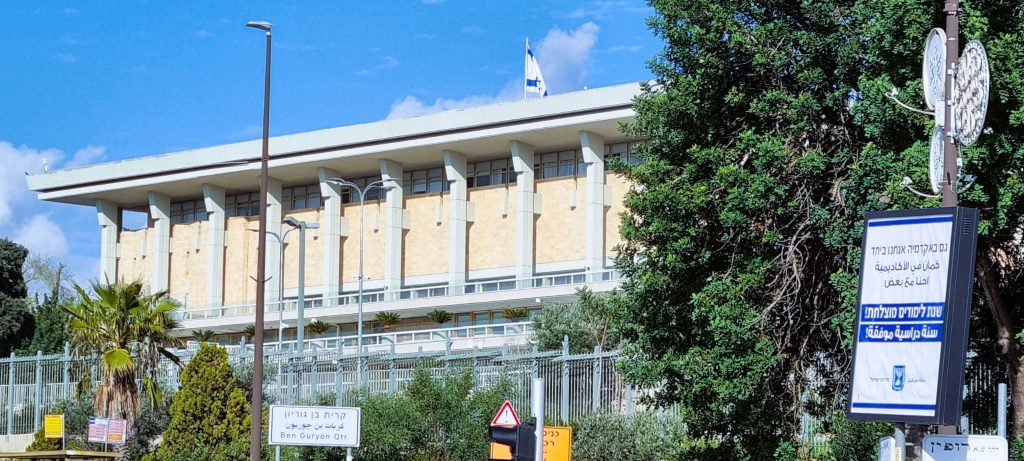
The 75th-anniversary birthday celebration for the Knesset on Tu Bishvat was extremely low-key. Oh so very different than in 2016, when the current location celebrated its 50th year on Tu Bishvat.
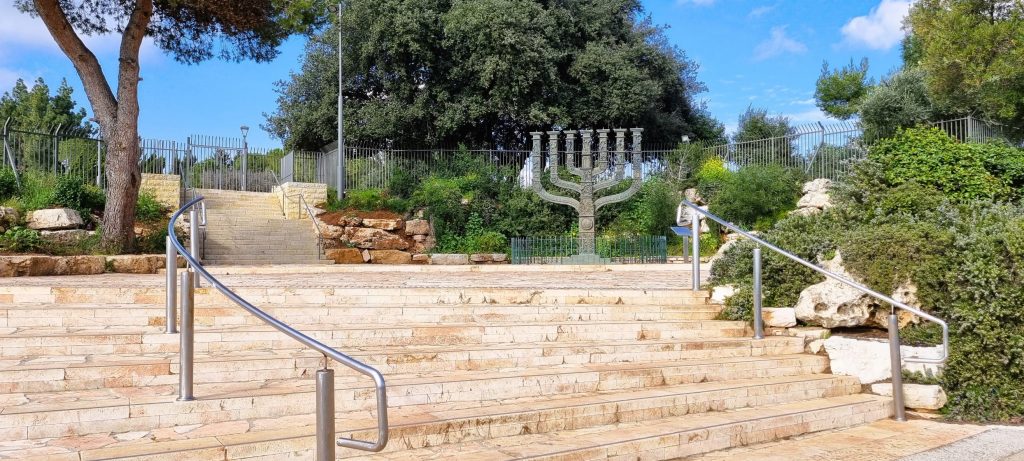
No flags were flying on the street, and no tourists were admiring the menorah across from the entrance.
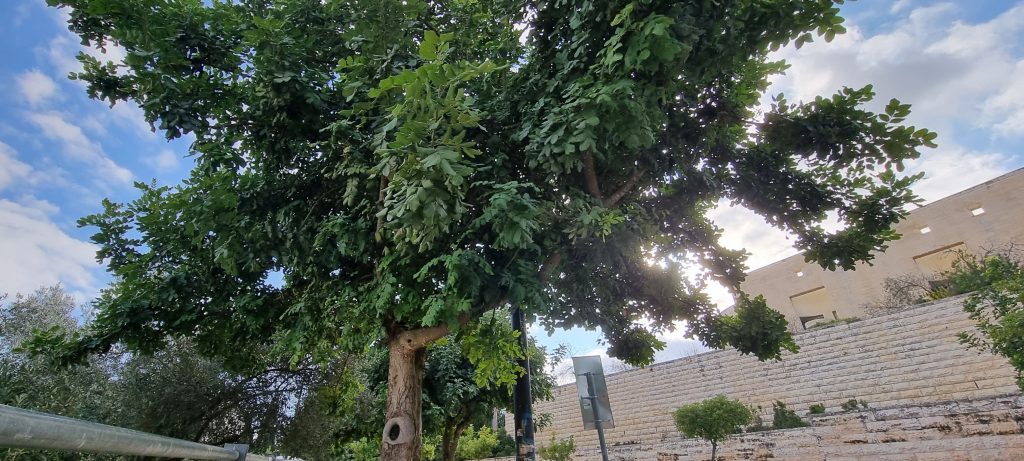
The row of carob trees across from the Supreme Court was fully green, a far cry from those old brown bokser pods we remember for the holiday “treat” that in Jerusalem litter the ground.
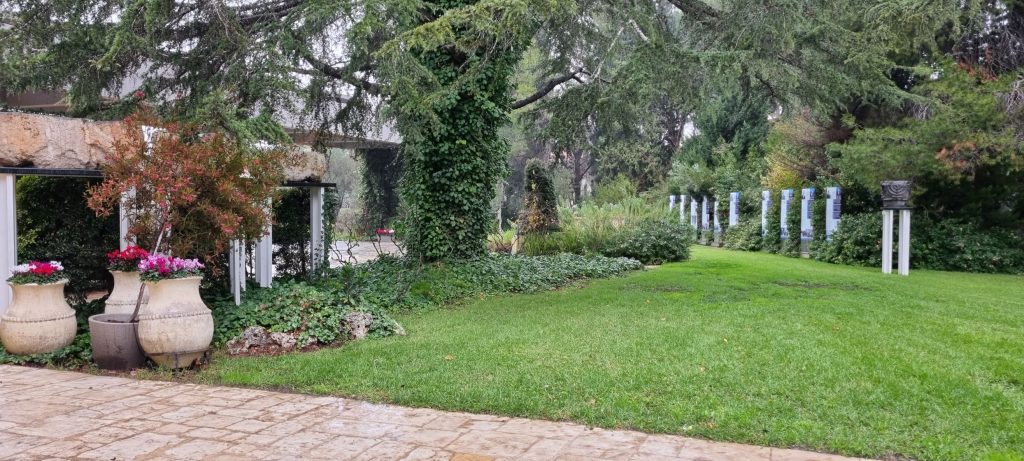
Back at Beit Hanasi, the Israel President’s Residence, the reception held was not for Tu Bishvat, but for the UN-mandated International Holocaust Remembrance, Day which falls on January 27th, and this year on Shabbat.
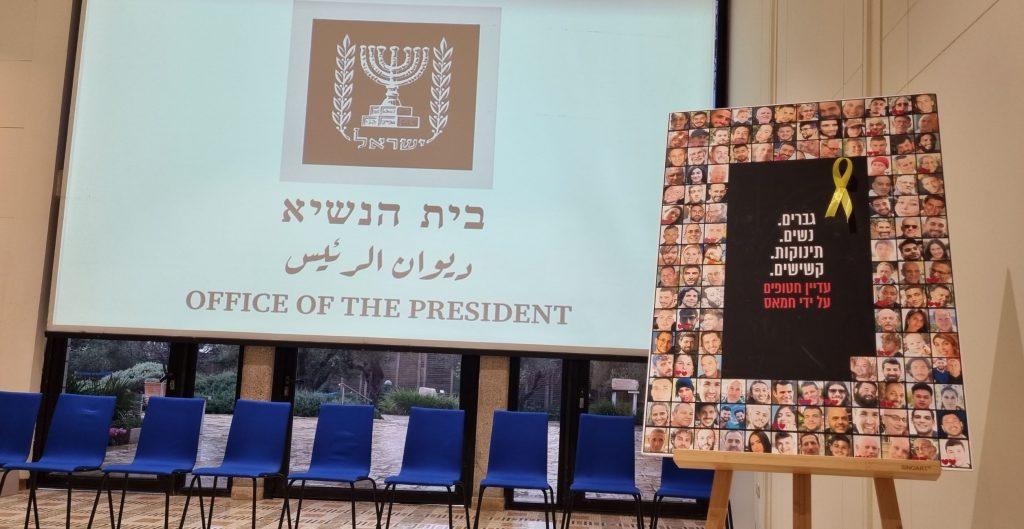
Inside the chairs were lined up for survivors of the Kindertransport, but the hostages in Gaza were not forgotten. There is an undercurrent everywhere thinking about the hostages held by Hamas.

These “children” who were saved 85 years ago by being sent to England, many never to see their parents again, were the featured guests of the President of Israel.
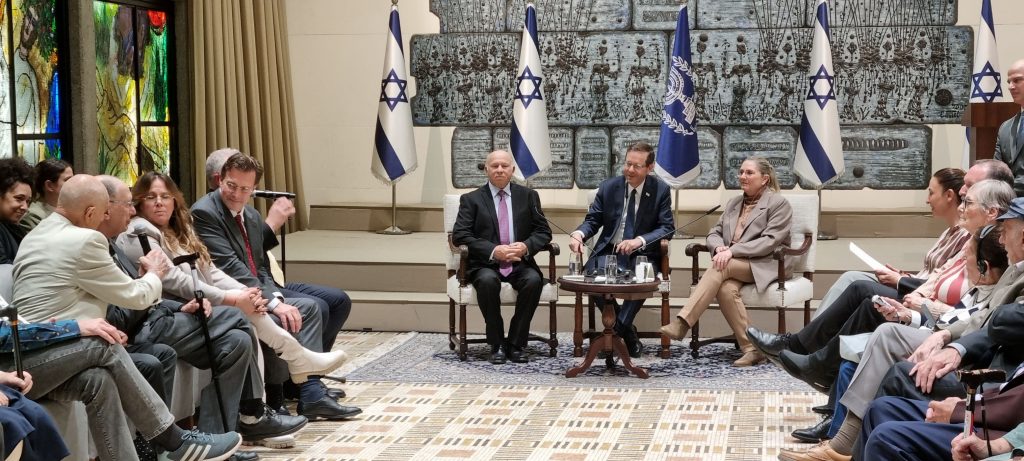
Germany’s Ambassador to Israel, Steffen Seibert attended and listened carefully to the survivors’ stories.

Sitting next to the moderator, he heard one of the survivors rescued from Nazi Germany in the Kindertransport operation in 1938, say that she was once again evacuated from her home – this time in Kibbutz Zikim on the Gaza border, after the community came under attack by Hamas on October 7.
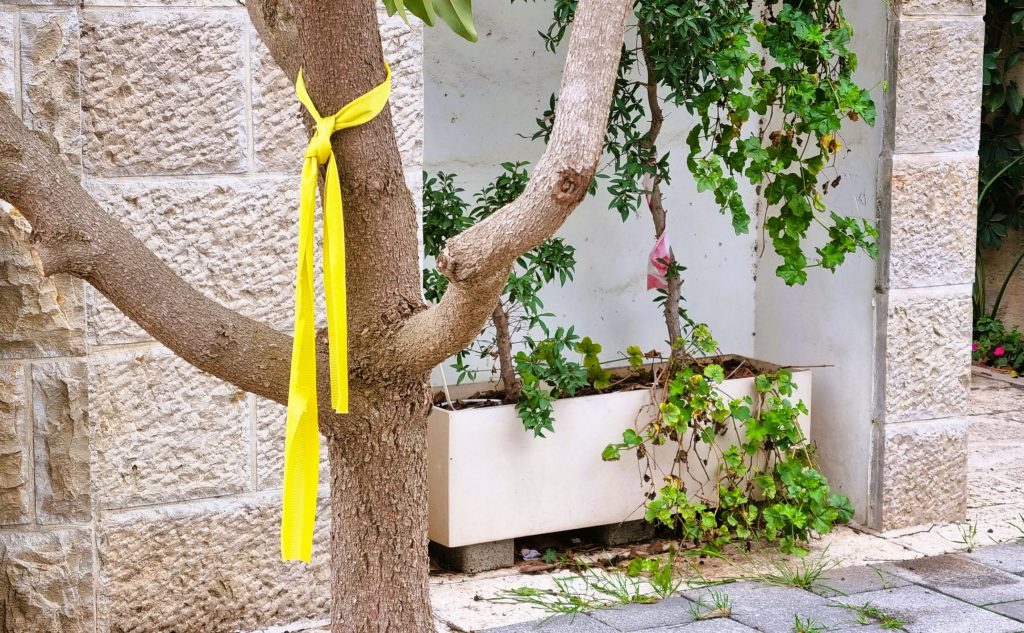
So yellow ribbons are tied to trees anticipating the hostages’ return.

The military cemeteries are expanding, with more graves and fresh memorial wreaths,
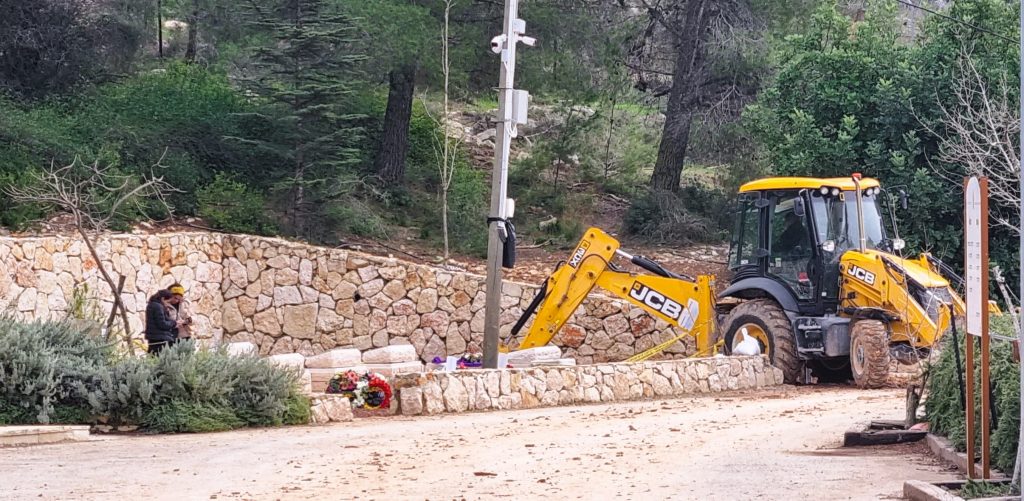
and new ones being prepared for use.
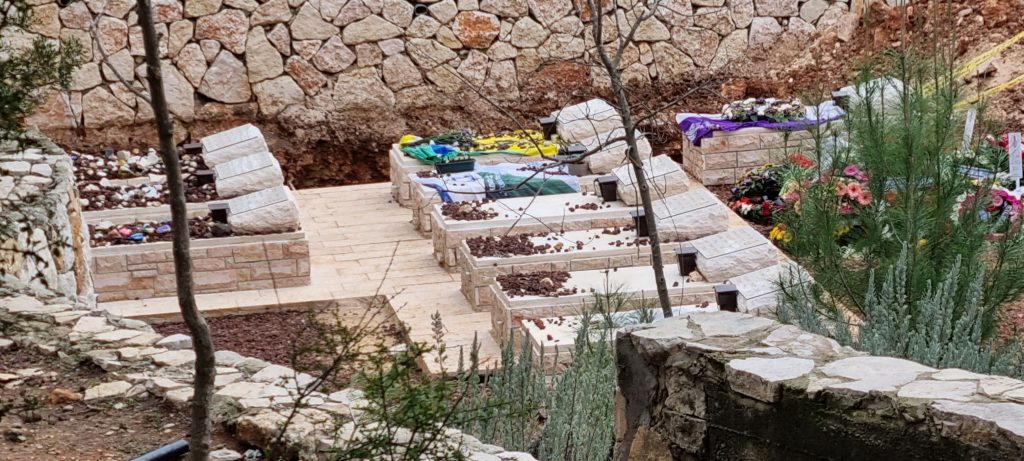
There were only two graves here on our last visit, not so long ago.
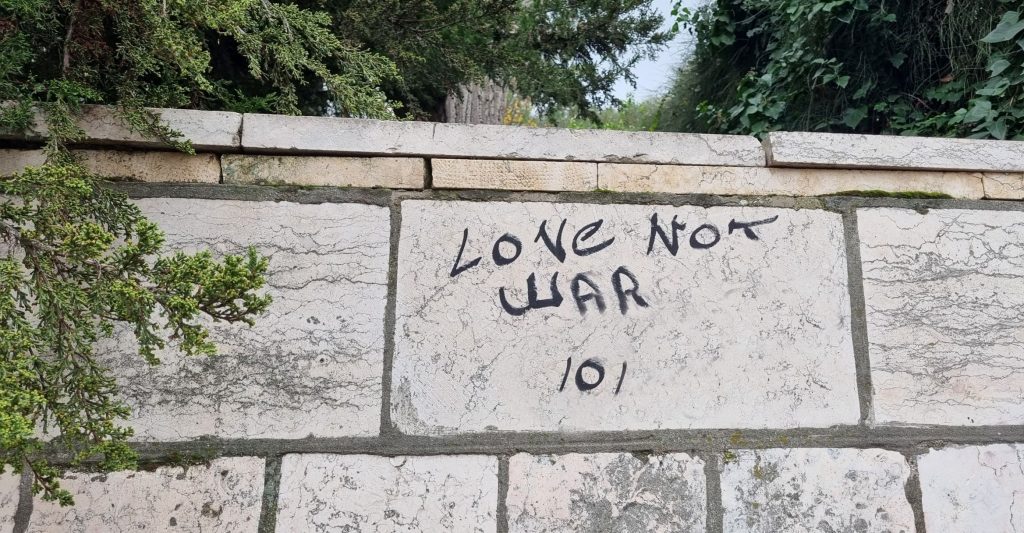
Love not war, as war goes on into the fourth month–a war Israel did not want, but must win.

On Tu Bishvat it was good to see the roof of the Bird Observatory green again.
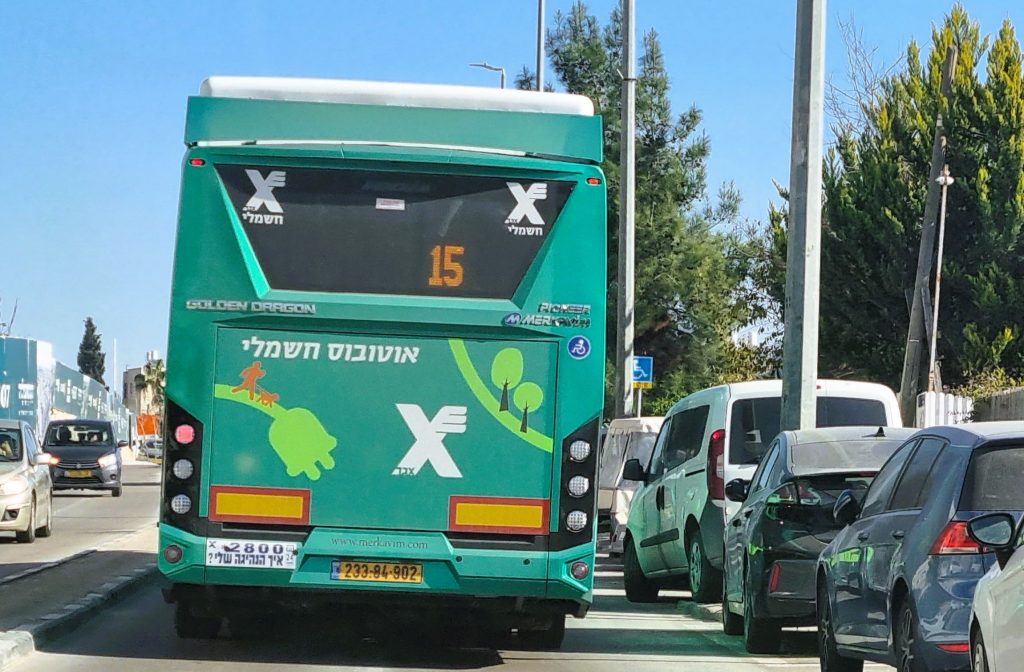
Even the Jerusalem buses go green with the new electric ones.
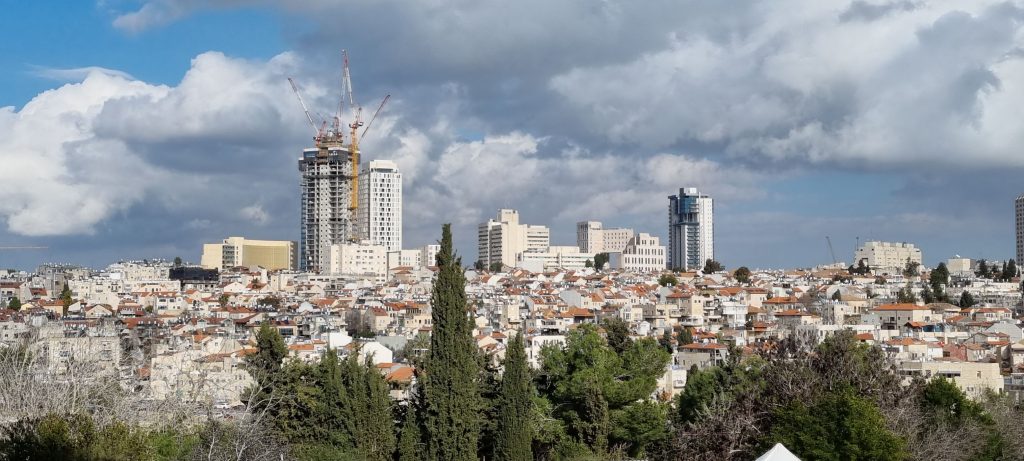
The new towers rising over the Jerusalem Streets seem to reach the grey clouds in the sky.
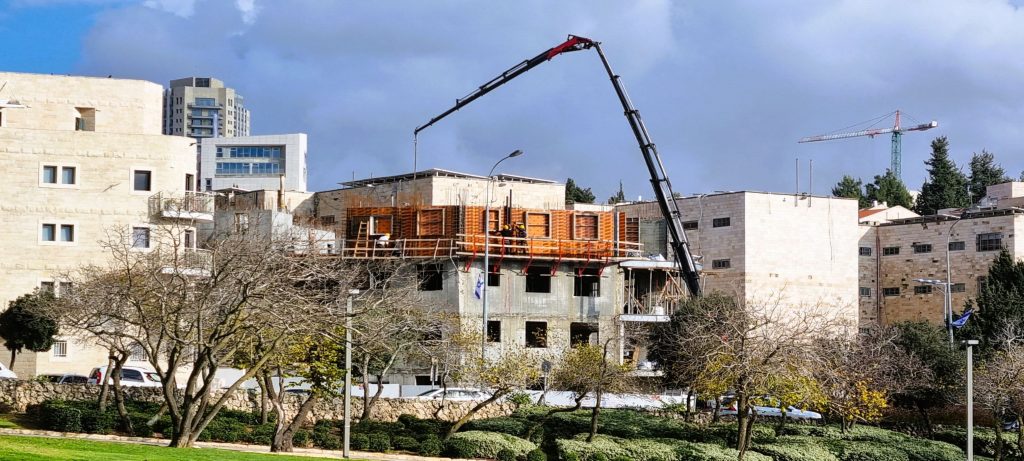
Construction is starting up again.
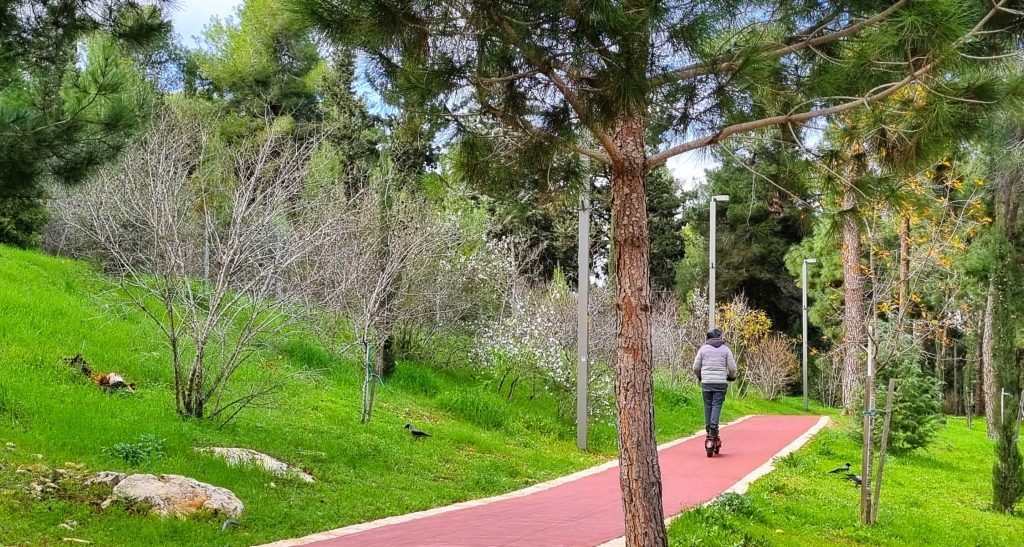
Nature is coming back to life again, with green grass and almond trees in bloom.
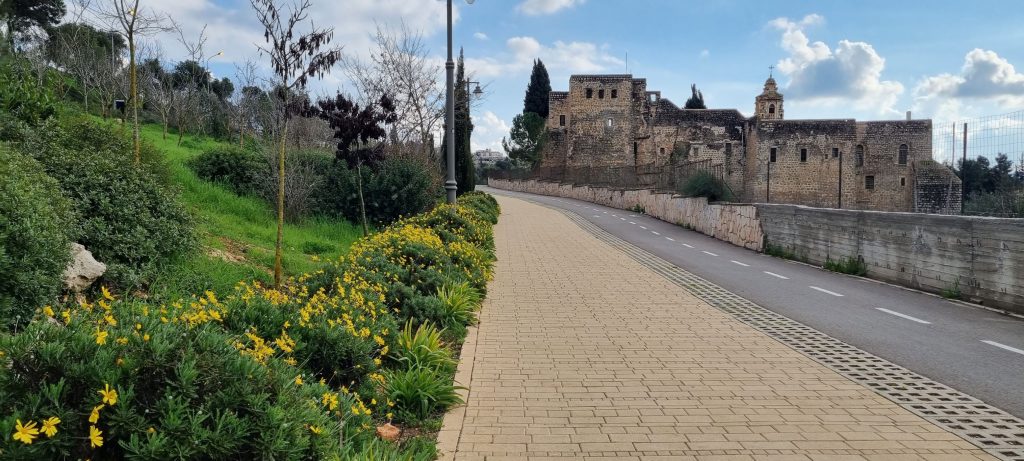
Flowers line the path ready for the Jerusalem Marathon in March.
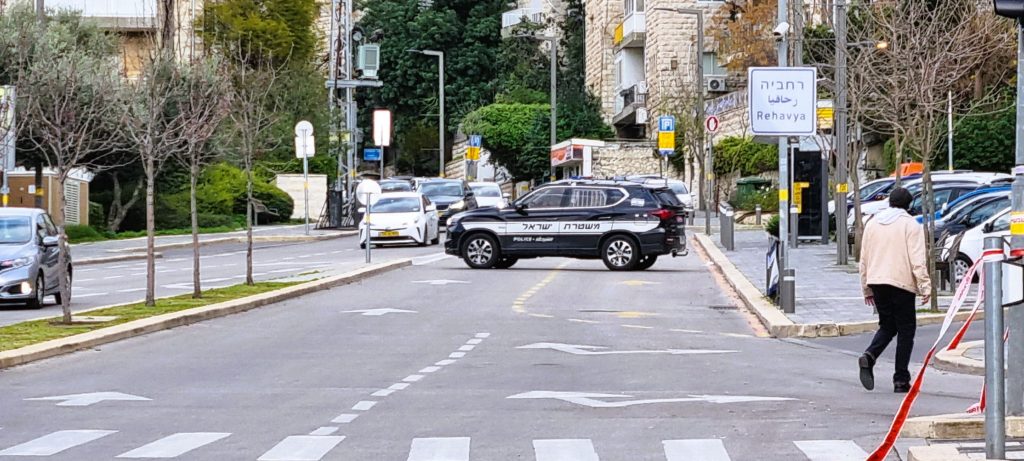
Azza Street was blocked for a protest – again.
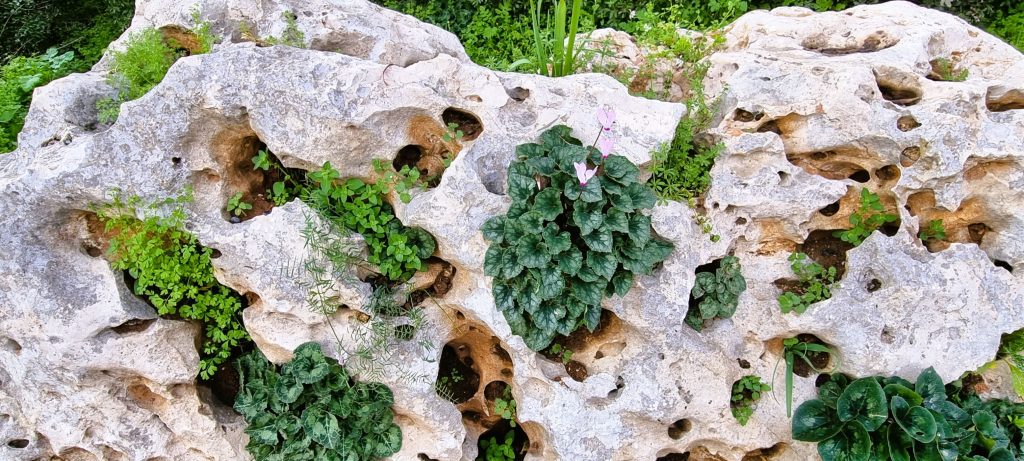
But flowers are sprouting from the old stones, part of the old and new, and changing along the Jerusalem streets.
Tu Bishvat four years ago at Beit Hanasi, ended with a special hope. Still singing songs of hope.

Moving forward and upward from October 7, it’s Israel Space Week 2024.
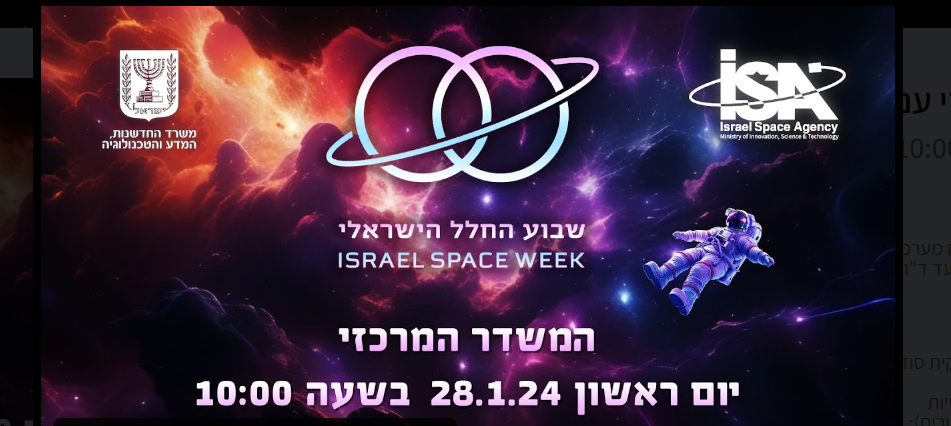
Israel Space Week started on January 28, 2024.
Something is always happening on the Jerusalem streets.
Hope to see you all here soon!
